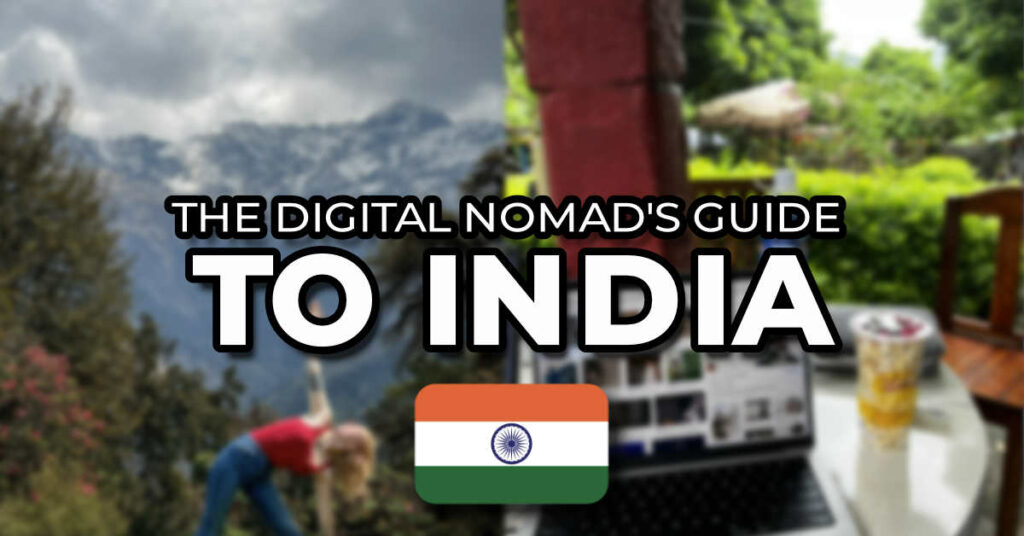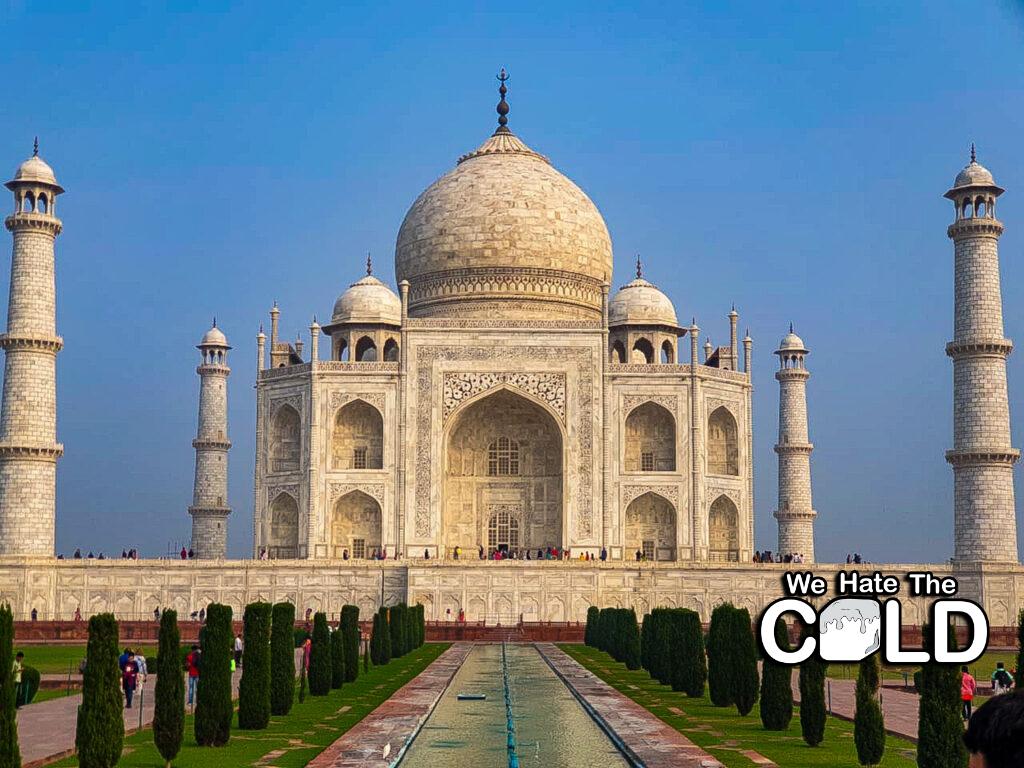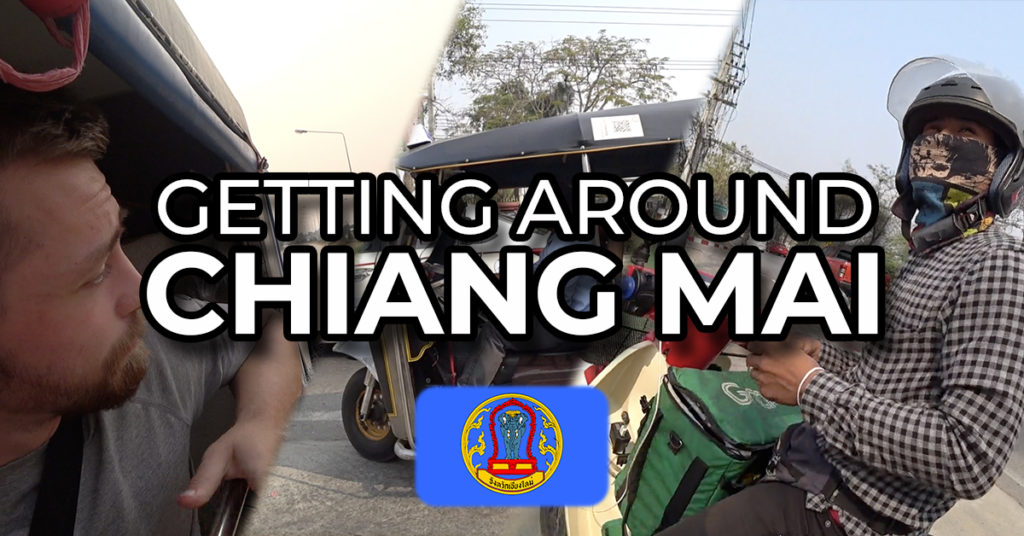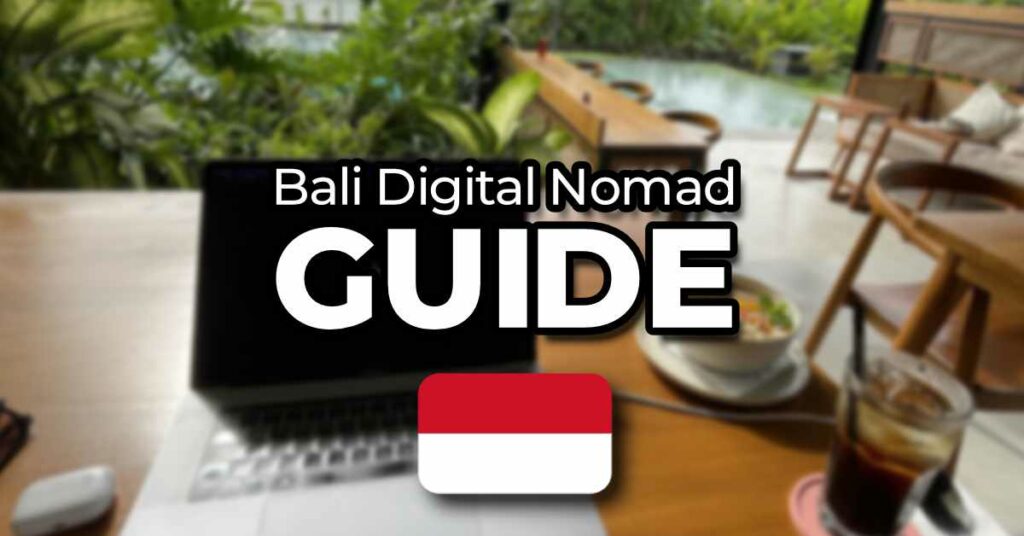Are you ready to embark on a life of adventure, flexibility, and boundless opportunities? I was, and that’s why I started my journey in India as a digital nomad. A world where my office has no fixed address. After being here for over a year now, I’d like to help you do the same without the hassles, and provide all the information you need for this journey in one place. In this article, I’m going to give you a guide to India, with no-nonsense advice about everything you need from the visa, to finding accommodation to rent, to interactive maps of the places I’ve been with the best cafes, bars, areas and more. I’ll guide you through the steps I took, the challenges I faced, and what I learned through it all so that you don’t have to figure it all out alone.
First let’s start off with a quick overview of being a digital nomad in India.
Cost of Living
- Accommodation: $300/month
- Food: $100/month
- Alcohol (pint): $1.62/one
- Transport: $36/month
- Workspace: $48/month
Nomad Visa
- Visa cost: $43 – $83
- Visa length: 1 year or 5 years
- Extension: Not possible
Connectivity
- WiFi
- Upload: 48.38Mbps
- Download: 48.62Mbps
- Cost: $12/month
- SIM Plan (1 month, unlimited)
- Upload: 6.20Mbps
- Download: 322.94Mbps
- Cost: $2.40/month
Key takeaways for being a digital nomad in India:
- Language: Hindi and English. Almost every state in India has its own language, but Hindi is commonly spoken in most regions, except for the south. Because of India’s colonial past, English is widely spoken across the country, and it’s fairly easy to communicate with the locals.
- Money: The local currency of India is Indian Rupees. Paying through digital wallets – such as UPI or Google Pay – is very common. Every shop will have a QR code to make the transaction. Sadly, most foreigners do not have access to these services and have to pay in cash at most places. Some stalls accept card, but it’s always a good idea to carry a fair amount of cash with you. You’d find plenty of ATM’s in the big cities, though note that some of them might not accept foreign cards. In rural areas, ATM’s can be very far, unserviced, or entirely non-existent – something to keep in mind while travelling to the more ‘offbeat’ places.
- Costs of living: This totally depends on where you’re staying. Many people get surprised when they realise how big the country actually is and how much the prices actually vary from place to place. Bigger cities such as New Delhi and Mumbai are certainly more expensive than, for example, Chennai, Bangalore or Kolkata. But compared to most western countries, life in India is much cheaper. Accommodation is likely to be your biggest expense, as healthcare, groceries and transport are relatively cheap in the country. A monthly salary of around $1.200 would be more than enough to live very comfortably in this country and still save some.
- Visa: India doesn’t have a specific Digital Nomad Visa yet, so most of us opt for the Multiple Entry Tourist Visa, there is no point getting the single-entry. You can get a one-year ($43) or five-year ($83) E-Tourist Visa, and US and Japanese citizens can even get a ten-year e-Visa. With this option, you can stay for 90 days in the country, and, in some cases, even 180 days continuously. For more in-depth information on this topic, check this article I wrote:
- Power Sockets: India uses 3 different types of power sockets: Type C, D and M. Type D is the most common one. It has three round prongs that form a triangle. Most Europeans can use their socket in India, but I’d still recommend getting a travel adaptor for your journey.
- Wifi: Internet is widely available in the urban areas, but in the rural areas, it can be a bit more challenging. I would recommend getting your own local SIM card, as it’s usually faster than the normal wifi connections you’d have at your hotel or cafe. Just connect to your Hotspot and you’re set!
- Healthcare: Medical care in the country is surprisingly good when it comes to its private hospitals. It’s a popular destination for medical tourists, there’s even a medical visa available for the ones doing so. Private clinics are top quality and very affordable. However, in remote areas, the healthcare isn’t as accessible. If you need to access hospitals or private clinics, better stick to the bigger cities like Delhi or Mumbai.
- Safety: It really depends on what you consider ‘safe’. While there are scams that you should be aware of and pickpocketing does happen sometimes, there aren’t any big safety issues in the country. As a woman, however, it’s very important to take extra precautions and dress appropriately to avoid any unwanted attention.
- Travel Insurance: It’s important to have the right Travel Insurance for peace of mind and financial protection in case of unexpected events, including medical emergencies, trip cancellations, lost luggage, or travel mishaps.
The Visa Process Top to Bottom – How Do You Get A Visa?
I never planned on being a digital nomad in India. When I left, I didn’t take my laptop or anything else to prepare me for the life I’m living now. The initial six weeks I was gone turned into three months, six months, and eventually one year and counting. I do graphic design projects on a freelance basis, translations, and lead yoga classes from time to time.
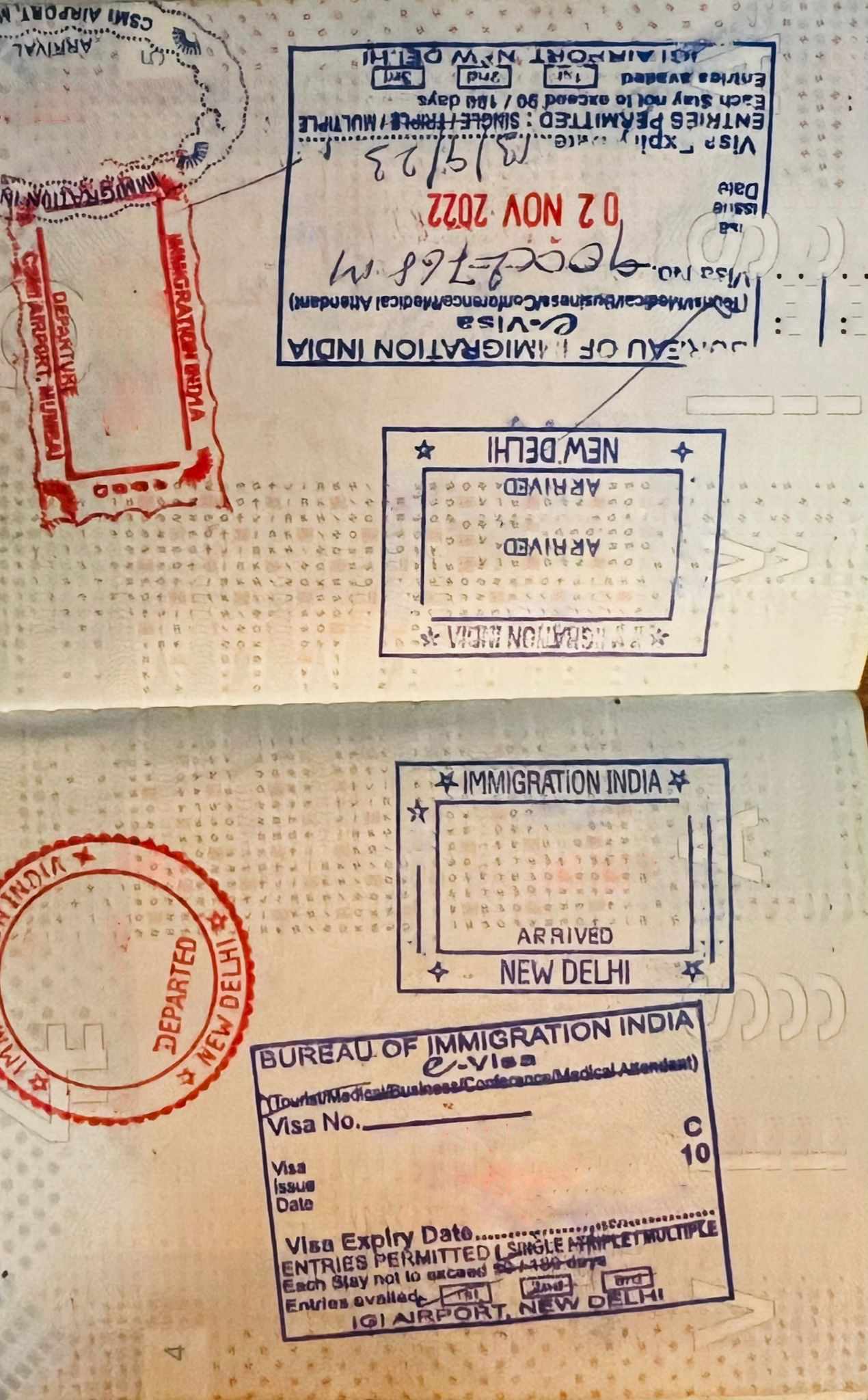
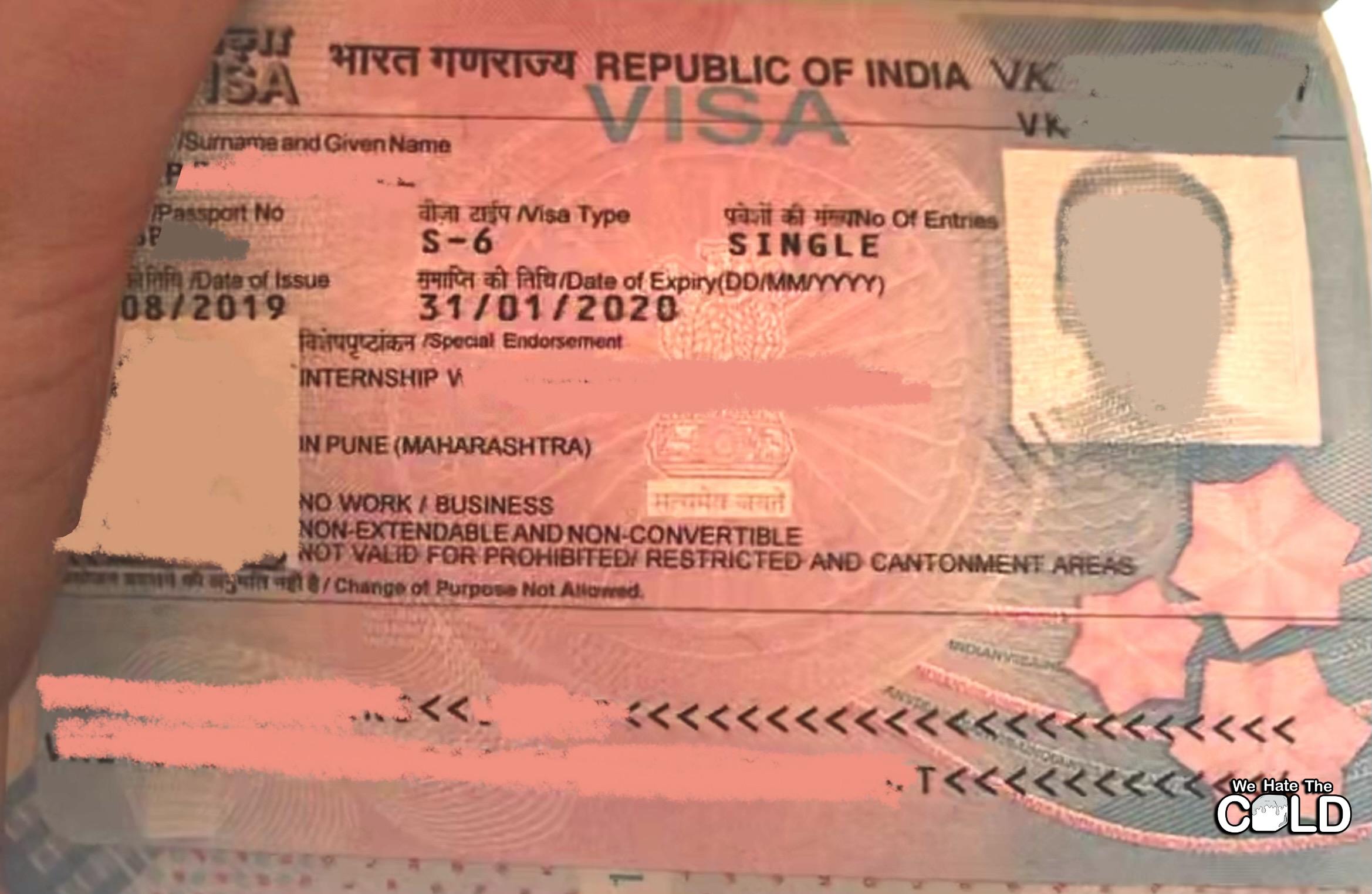
India Digital Nomad Visa – Is There A Digital Nomad Visa For India?
Does India have a digital nomad visa? Currently, India does not offer a dedicated Digital Nomad Visa. Many digital nomads choose the Multiple Entry Tourist E-Visa, which can be obtained through the government’s official website. You have two choices: a one-year e-Visa costing roughly $43 or a five-year e-Visa priced at approximately $83.
While the e-Visa is valid for one year or five years, you’re allowed to stay only up to 180 days in one calendar year. The e-Visa is non-extendable and non-convertible. When it’s about to expire, you can easily apply for a new one. I’ve done this multiple times without issues.
Can You Work Remotely On A Tourism Visa In India?
Many digital nomads choose to work remotely while holding an Indian tourist visa. This falls into a legal grey area – if you’re working for a company or a client based outside India, it’s usually considered acceptable. However, if you’re doing a local job or collaborating with an Indian company, it’s a definite no as far as the law is concerned.
I’ve been working remotely in India on my tourist visa for around six months and have met many others who’ve been doing it too. I definitely don’t encourage you to do the same, but as the rules aren’t that clear yet, it’s a grey area and many digital nomads working in the country take advantage of that. It’s always best to consult a professional before taking this step, however.
If you’re working for a client in India or accepting a local job, it’s a definite no-go. If you’re freelancing for clients outside India and your earning remains outside India, you’re probably fine. Many people freelance and work remotely while exploring the country and never face any problems. As far as I know, there haven’t been any reports of people being blacklisted or deported from the country due to working remotely on their tourist visa.
It’s difficult to prove that you’re a digital nomad working remotely in India. As long as you keep your work outside the country and not use an Indian bank account, it’s largely a risk-free endeavour.
I would never encourage anyone to break the law, and would recommend doing your own research and consulting a professional in this field before proceeding.
Visa Type, Costs, Duration etc.
Here is a quick overview of the Indian Tourist E-visa:
- Name – Multiple Entry Tourist E-visa
- Fee – Approximately $43 for one year, $83 for five years (varies by nationality)
- Visa length – 1 or 5 years (10 years for US and Japan)
- Extendable? – No
- Multiple entries? – Yes, unlimited
- Requirements
- Passport should have validity of at least six months from the date of arrival
- Passport photo (51x51mm) taken within 6 months
- Local address of stay
- Who can apply? – Any tourist from these countries
- Tax
- Territorial tax system. If the company is registered outside, you don’t need to pay tax on money earned outside of India
- Tax residency changes after 182 days
I got the one-year Multiple Entry Tourist e-Visa in 2022. At that time, the ‘180 days per calendar year’ rule didn’t apply yet, allowing me to stay for one full year in India, provided that I made a visa run every 90 days (we’ll go into that later). Once that visa was about to expire, I flew to Vietnam for one month to apply for a new one and got it within the next 48 hours. I’ve met other nomads in the country who did the same, though most of them opted for the five-year option.
Visa Runs, How To Do Them, and The Best Routes To Follow
There’s no way to extend your Tourist E-visa, and as you have to leave the country every 90 days according to local visa rules, visa runs are your only option. You can re-enter the country as many times as you like, just keep in mind that your first entry into India should be by air.
So, you’re loving your time in India, but that 90-day visa limit keeps knocking on your door? There’s no option to buy some extra time in this beautiful country, so you’re forced to explore another place outside of India. Not too bad, right?
With the Multiple-Entry Tourist e-Visa, you can bounce in and out of the country whenever you please. Just remember that your first entry should be by flight to get your visa stamped. After that’s done, you’re free to explore the region and hop back into India through land or air.
Here are the routes you can follow for those border runs:
- Nepal by land
- One of the most popular destinations for a visa run is Nepal, as it has enough to offer to keep yourself entertained for at least a few days and is very affordable.
- Nepal offers visa on arrival for most nationalities, even by land crossings, which is why a lot of travellers opt for this beautiful mountainous country.
- It’s the easiest visa run for those in the northern regions of India.
- There’s a direct bus connection from Delhi to Kathmandu, which takes around 30 hours and costs approximately Rs. 3500 ($42).
- You can also travel by air to Nepal for as little as $50 and the travel time is about two hours.
- Bangladesh by land
- Even though it’s not as popular as Nepal, it’s a good option to consider, as Bangladesh is a country that’s yet to be fully explored.
- This Visa run is most suitable for travellers in the northeast region of India.
- You can opt for a bus or train from Kolkata to Dhaka. The ride takes around nine hours and costs approximately Rs. 1500 ($18).
- Tickets can be obtained online.
- The train from Kolkata to Bangaon takes around two hours and costs approximately Rs. 20 ($0.24). Train tickets can be bought online or at the station.
- Once you arrive at the Bangaon Station, you can easily take a tuk tuk which will drop you at the border for around Rs. 150 ($1.80).
- Here, you’d go to the immigration office and obtain your visa on arrival.
- Sri Lanka by air
- Sri Lanka is a very small country which means you can see most places within a 4/5 hours drive. It offers beautiful culture as well as stunning nature.
- Flights from Delhi to Colombo are approximately $110.
- Keep in mind that you’d need a Sri Lankan visa before arrival, which you can obtain through the Sri Lankan government’s official website.
- Personally, I did a visa run to Sri Lanka for one week and came back to India without hassle.
You can return smoothly after your visa run, but keep in mind that they might ask you for proof of your next outward travel. If you don’t want to book a ticket out yet, book a flight reservation on Onward Ticket which provides a fake ticket. I’ve personally used this and it works unlike other services promoted online.
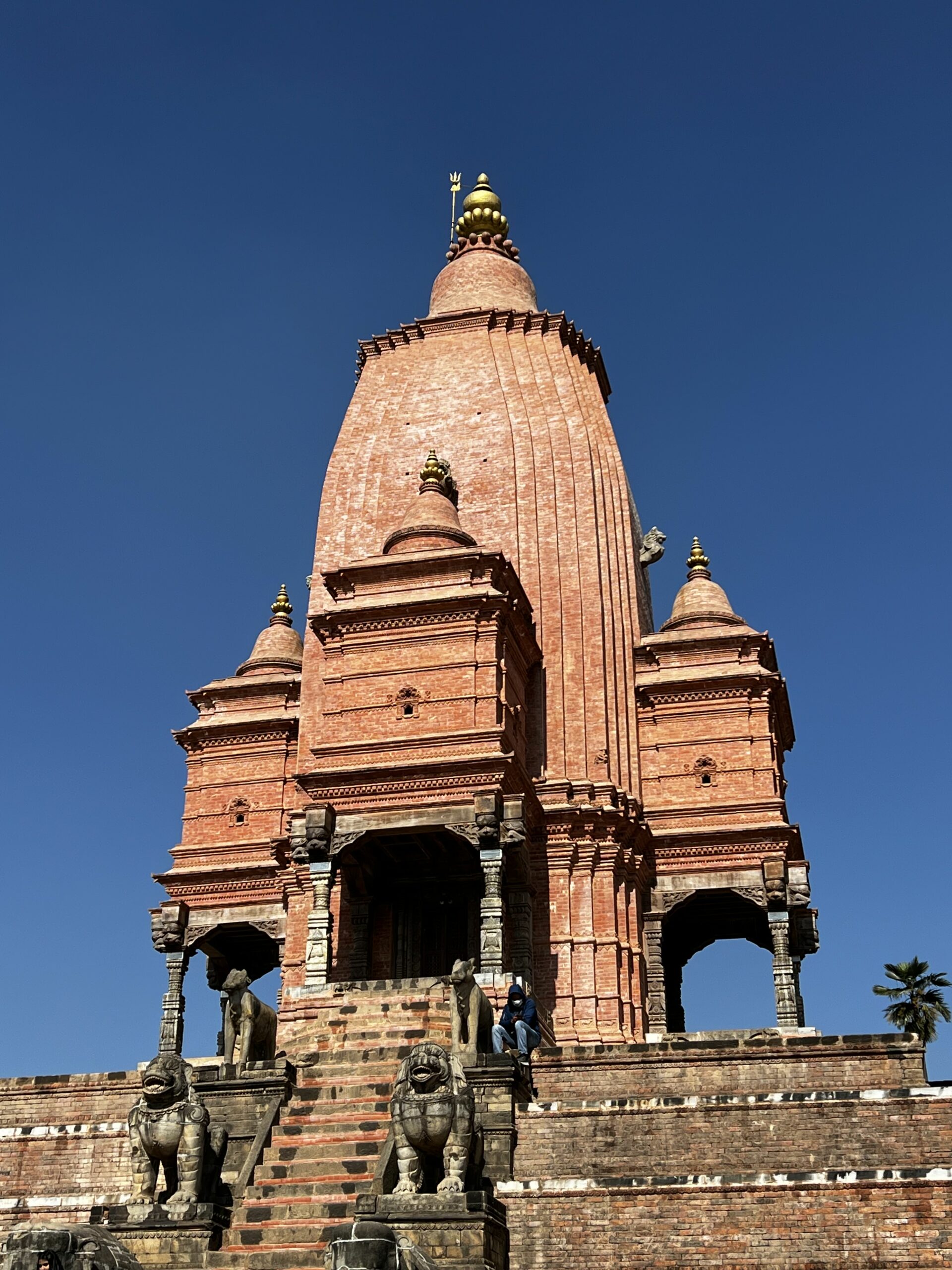
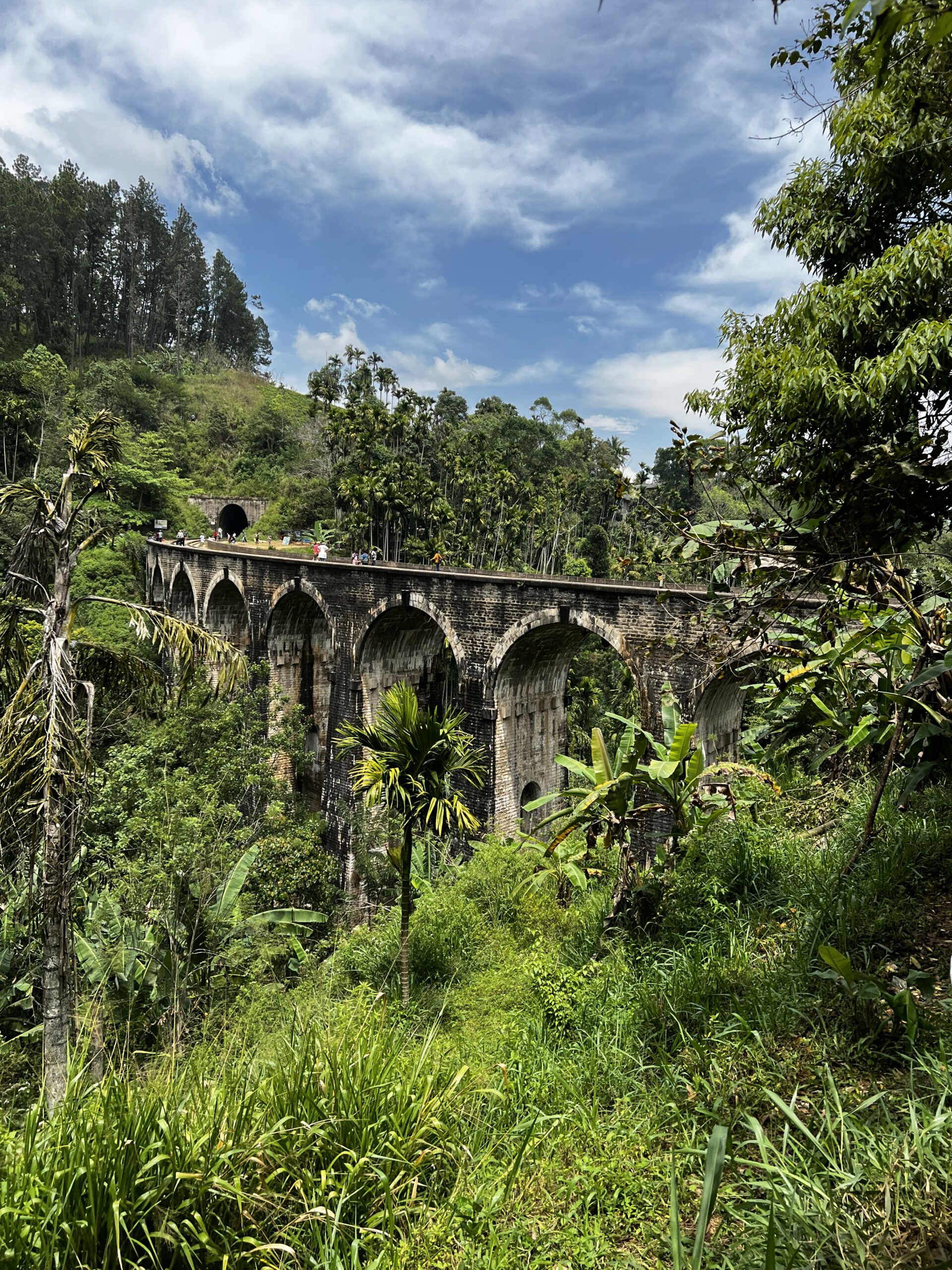
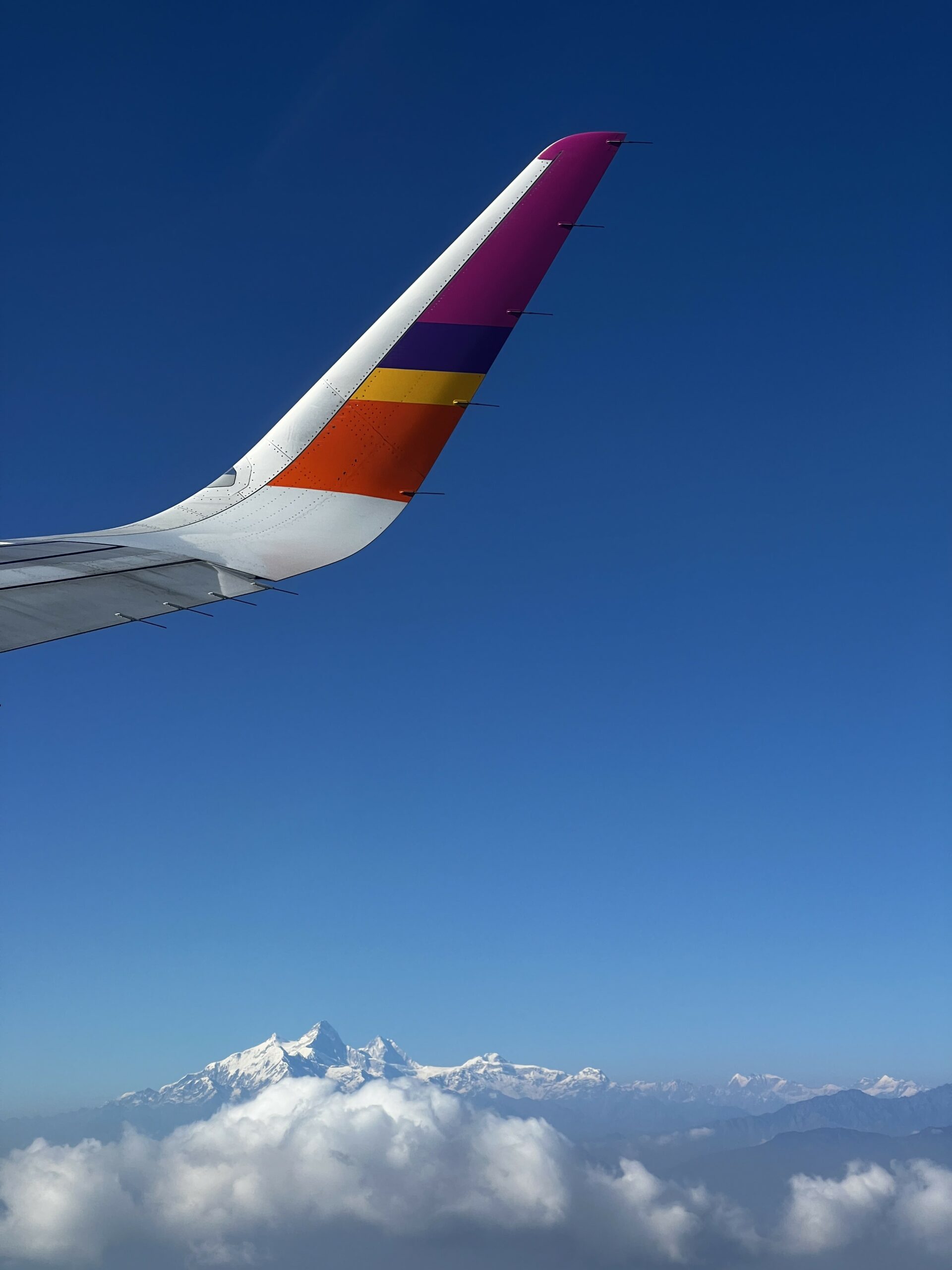
Tax Rules For Remote Work in India (Long Stay)
India’s tax rules are influenced by the duration of your stay and income source, which can impact your tax residency status. According to the law, if you stay in India for 182 days or more in a financial year (April 1st to March 31st), you’re considered a tax resident. If you’re in India for fewer than 182 days, you are treated as a non-resident for tax purposes.
If you’re working online while staying in India for more than 182 days, your global income may be subject to Indian taxation. India practices a ‘worldwide income’ system, meaning you’re taxed on income earned within India and abroad.
If you have a company based in your home country, this doesn’t automatically exempt you from becoming an Indian tax resident, even if you meet the 182-day criterion. Indian tax authorities typically focus on the physical presence of an individual, regardless of the location of their company.
I personally haven’t faced any problems, and I’m not a tax resident. I’ve never heard of other digital nomads facing problems of this nature, either. However, if you’re staying longer than 182 days (which is very unlikely on a tourist visa, as you’re only allowed to stay 180 days in one calendar year), it’s essential to consult with a tax advisor or a chartered accountant in India to ensure that you meet your tax obligations correctly.
To know more, you can check this official Indian government website. I’d always recommend consulting with a professional just to be sure.
Best Places For Digital Nomads To Stay in India
In a land filled with diverse landscapes and cultures, finding the ideal place to work, live, and explore is the key to a successful nomadic journey. Here’s a virtual tour of the best places to stay as a digital nomad in this vast country.
- Goa – A beautiful state on the west coast of India. Famous for its beautiful beaches, hippie culture and retreats. It’s a popular spot among remote workers from all over the world.
- Delhi – India’s bustling capital – a city that has it all. Explore iconic landmarks, vibrant bazaars, and a culinary scene like no other.
- Pune – An idyllic city that offers plenty of business opportunities, good connectivity, and high safety. It’s a great city for those looking for new possibillities.
- Himachal Pradesh – Nestled in the serene foothills of the Himalayas, this state boasts some of the most stunning landscapes in the country. With its rolling forests and majestic snow-capped peaks, it’s the ultimate retreat for those seeking to escape the hustle and bustle of modern life and spend some time in nature.
Goa – A Hippie Paradise
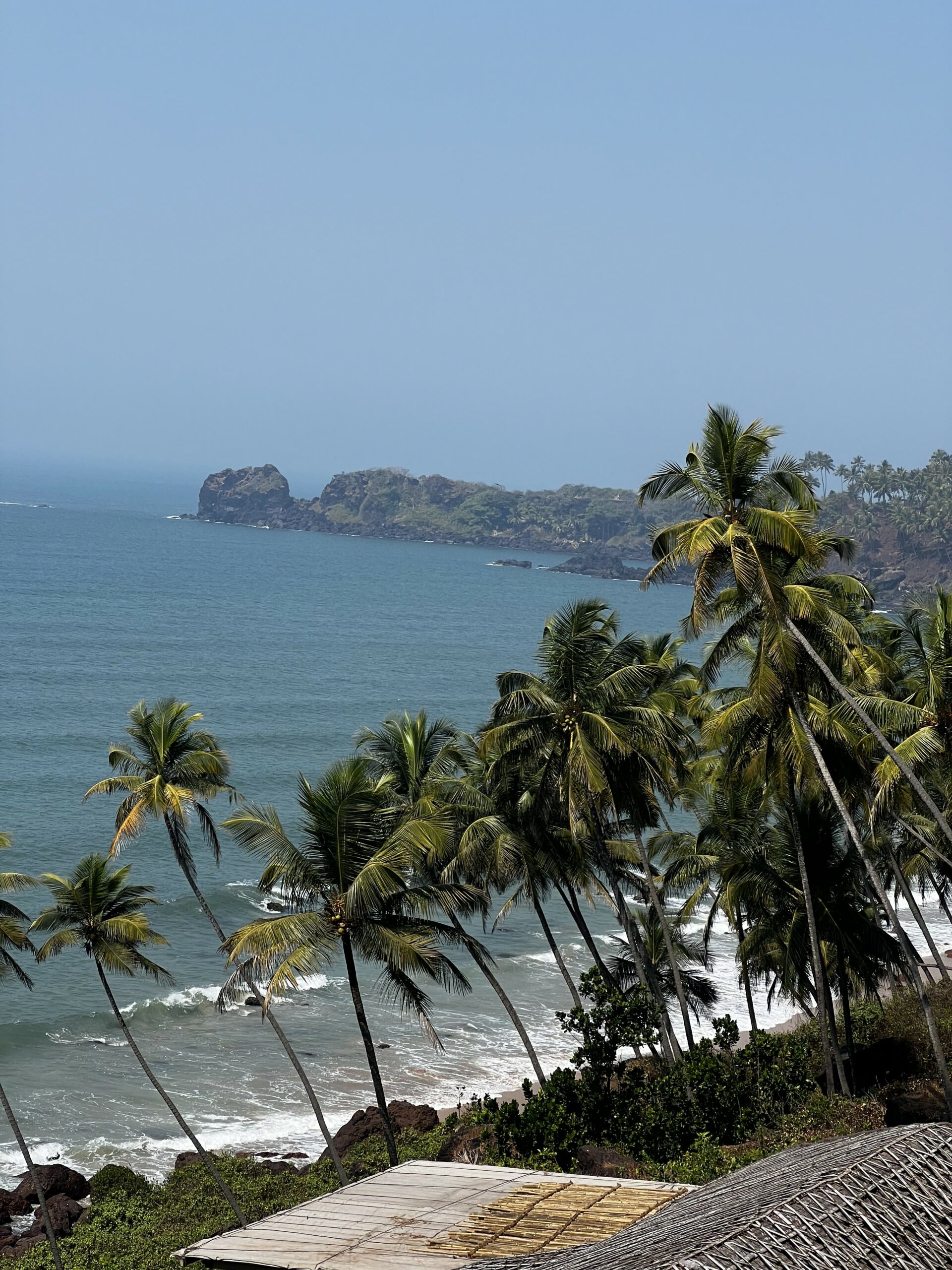
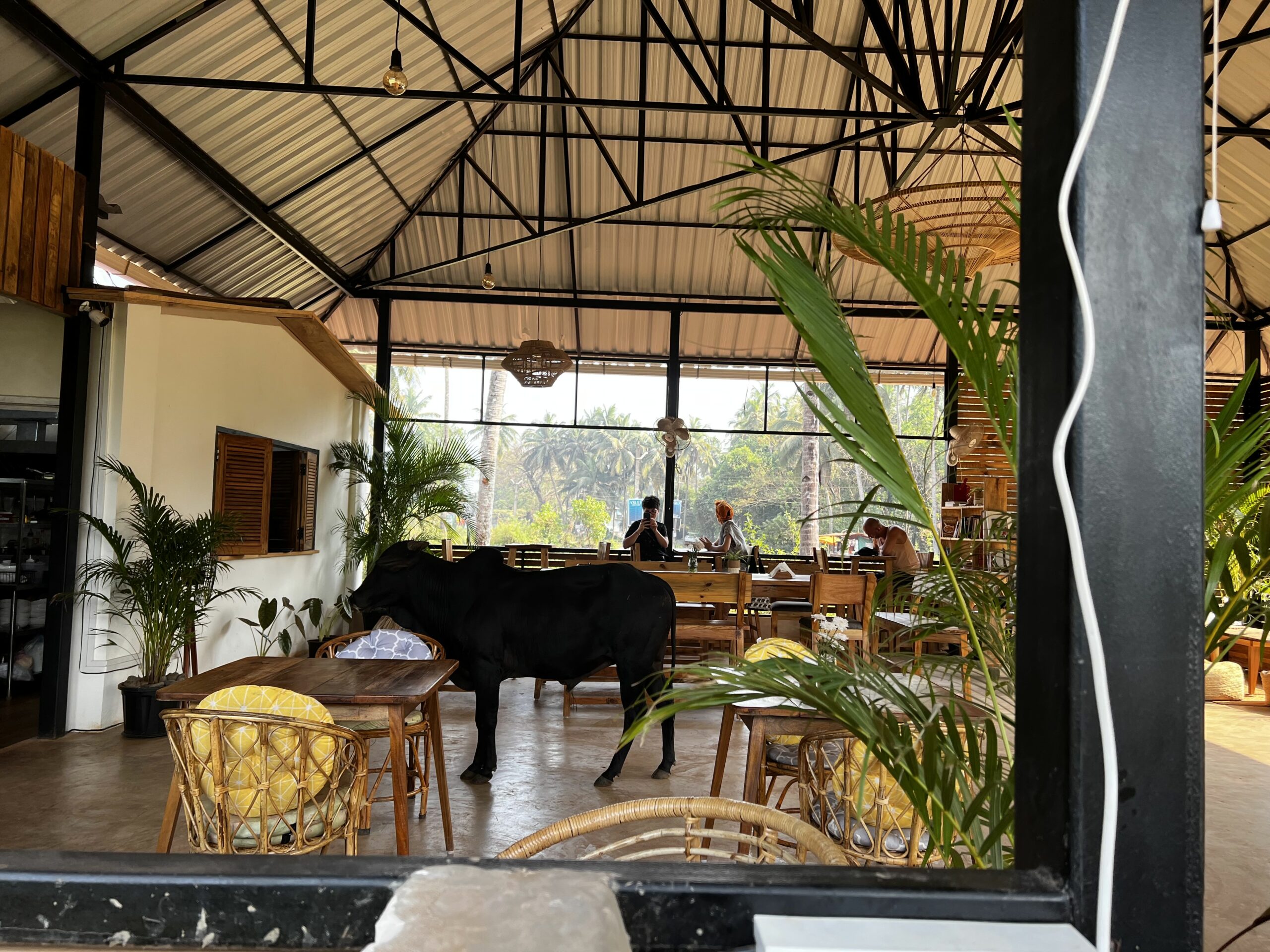
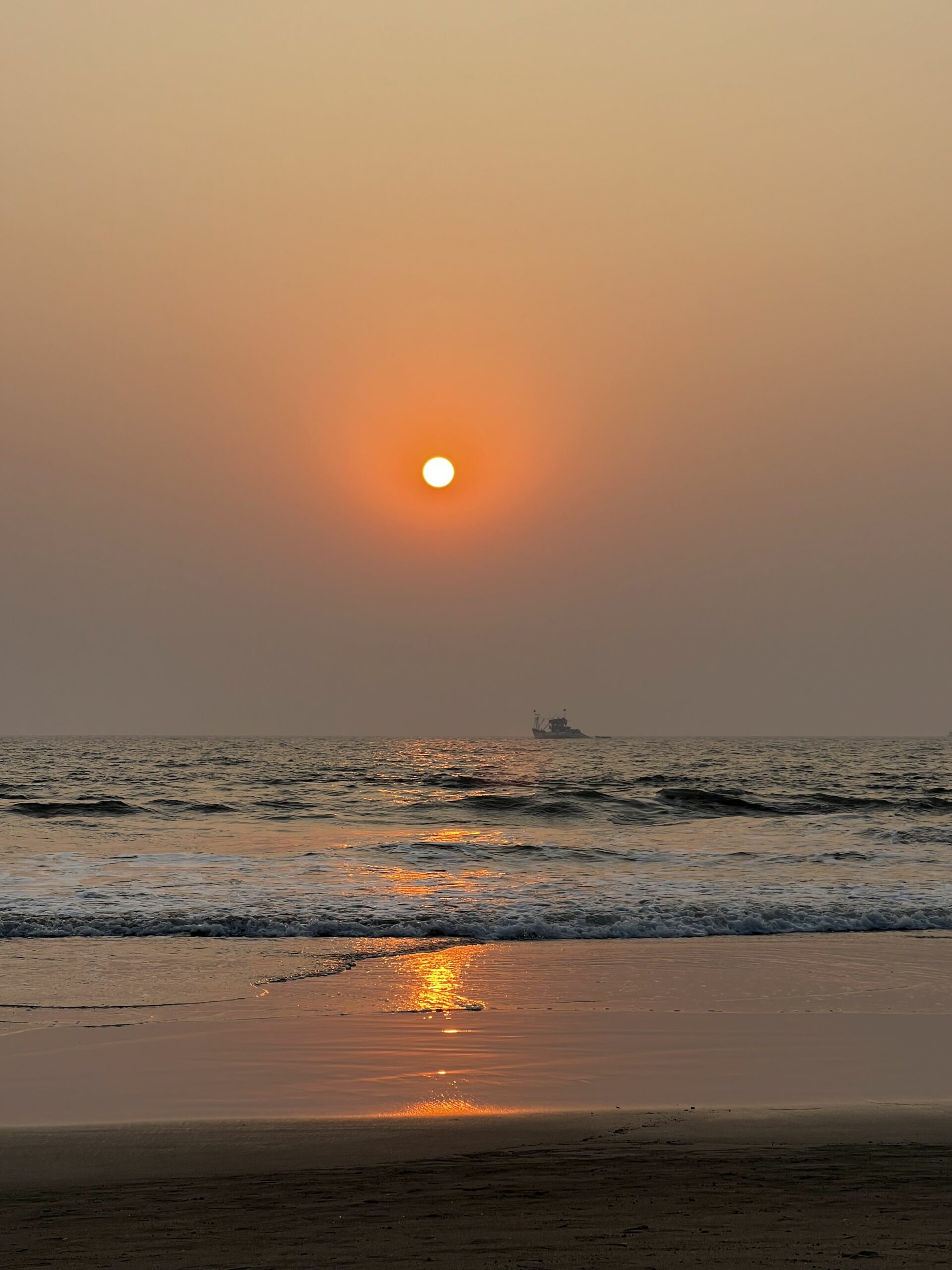
This place is a digital nomad’s dream, with serene beaches, luscious greenery, palm trees, and, of course, loads of coconuts. Its rich cultural topography, with a blend of Indian and Portuguese influences, gives it a unique atmosphere unlike most other places you might visit in the country.
Personally, I spent two weeks in North Goa, particularly in Arambol. This place captured my heart – it’s nestled right along the beach and offers an abundance of yoga drop-in classes, sound-healing workshops, and lively Kirtans in the evenings. Arambol truly has something for everyone. What’s more, it’s a hub for fellow digital nomads, making it easy to connect and create new friendships in this tropical paradise.
Additionally, safety isn’t a problem here at all. During my stay, I always felt secure walking alone at night, even and especially as a woman.
Network connectivity is fairly good, and I could do my work without issues. However, if you require fast Wi-Fi for your work, check out some of the co-working places I’ve listed on the map.
If you’re planning to travel to Goa for remote work, I’d recommend the north side over the south. The southern part of Goa is more remote and, hence, more expensive, as well as less accessible. Network connectivity is also slightly worse in the south.
Top 3 places to check out in North Goa:
- Garden of Dreams – This cafe has the most cozy vibe you’ll find in Goa. It has cute little beanbags to sit on, the most amazing (vegan) food paired with live soulful music.
- Love Temple – Almost every evening people living in the area head here to sing devotional songs together for the sunset. They also host retreats or workshops you can join to learn something new.
- Arambol Hippie Market – If you like shopping, don’t miss out on this market. They have everything from Indian handicraft to handmade jewellery. It’s placed alongside the shore, and when you reach the end of the market, you’ll reach this beautiful serene beach and a secret little sweet water lake.
Delhi – India’s Crazy Capital
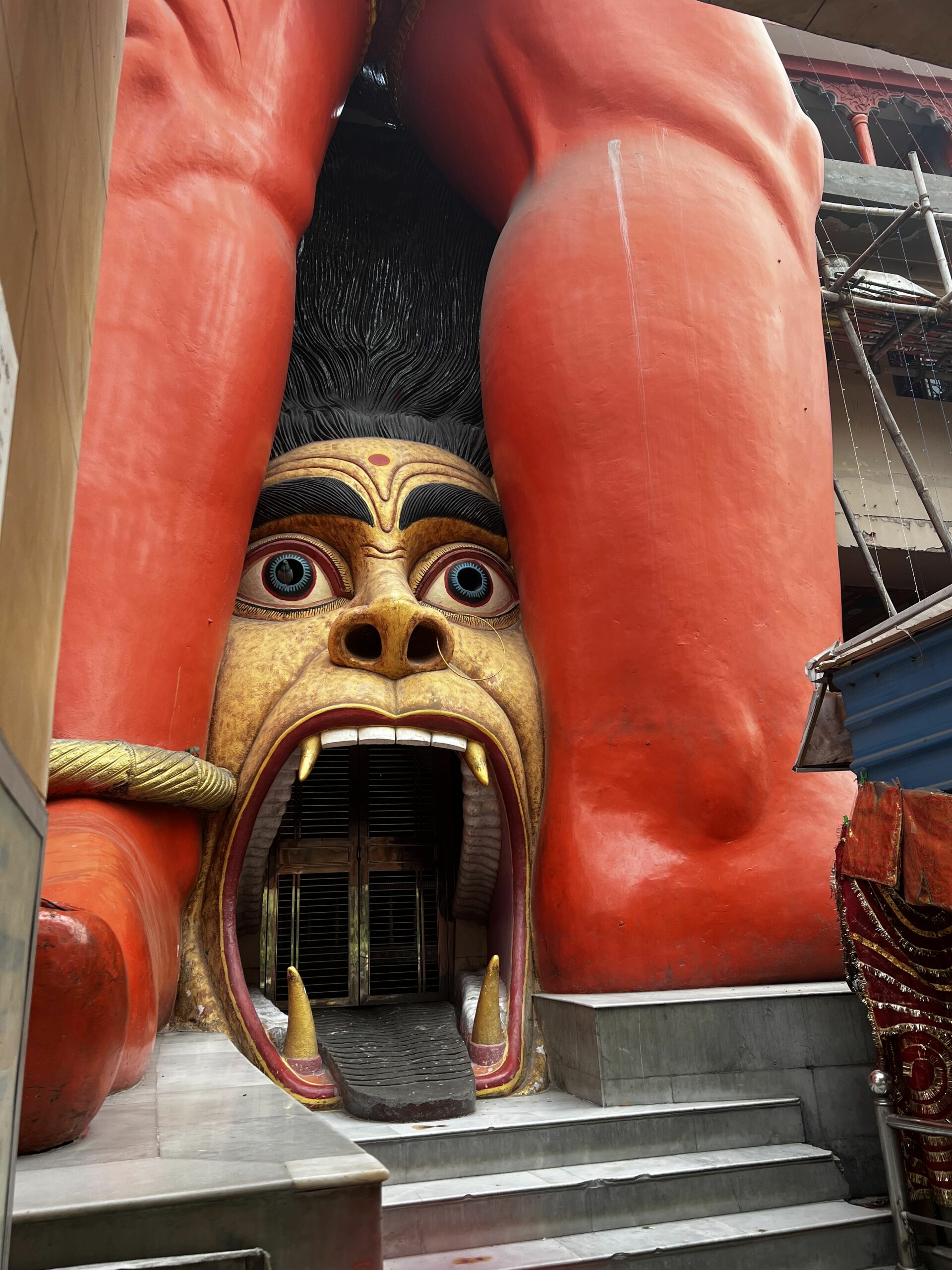
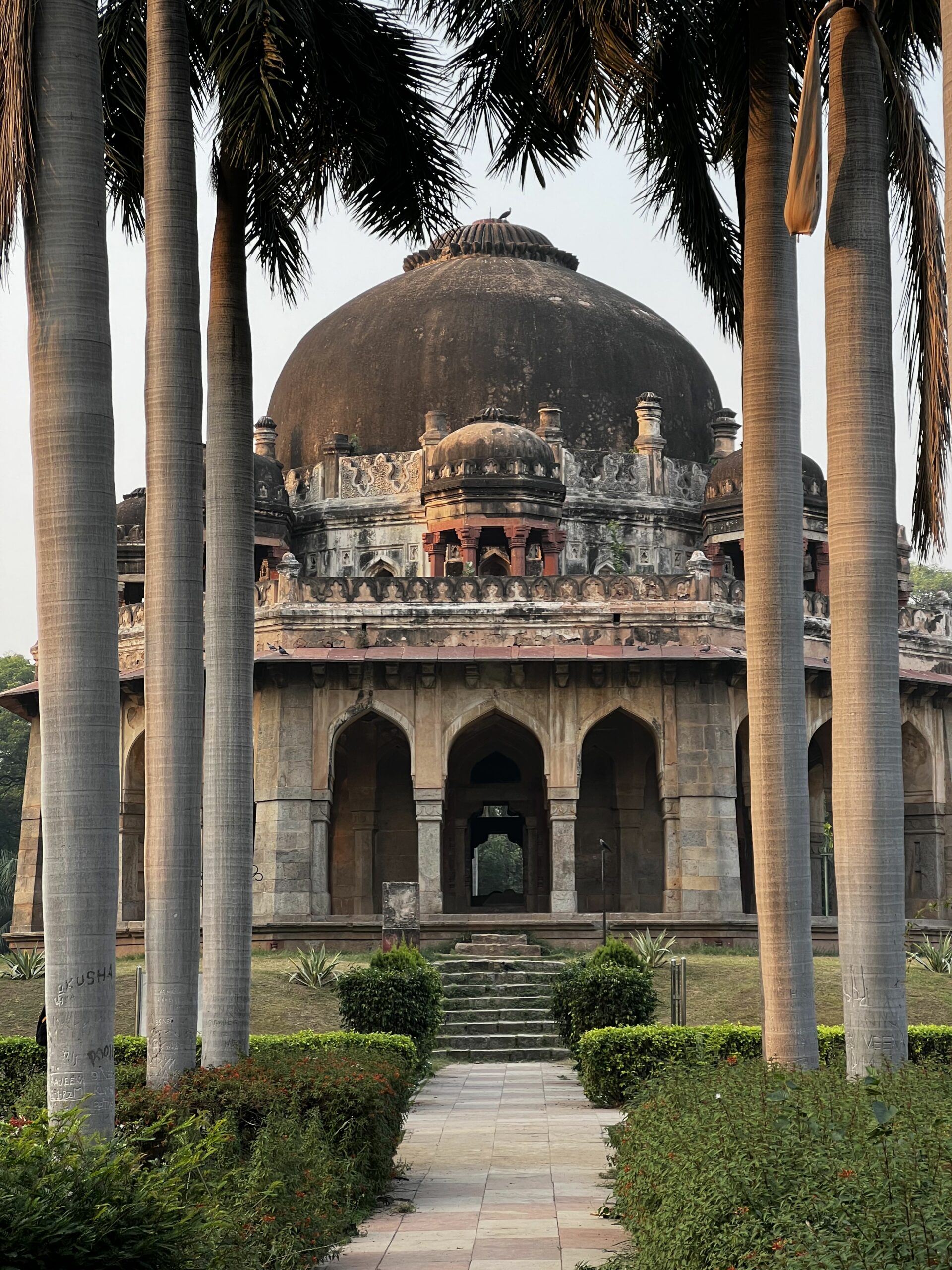
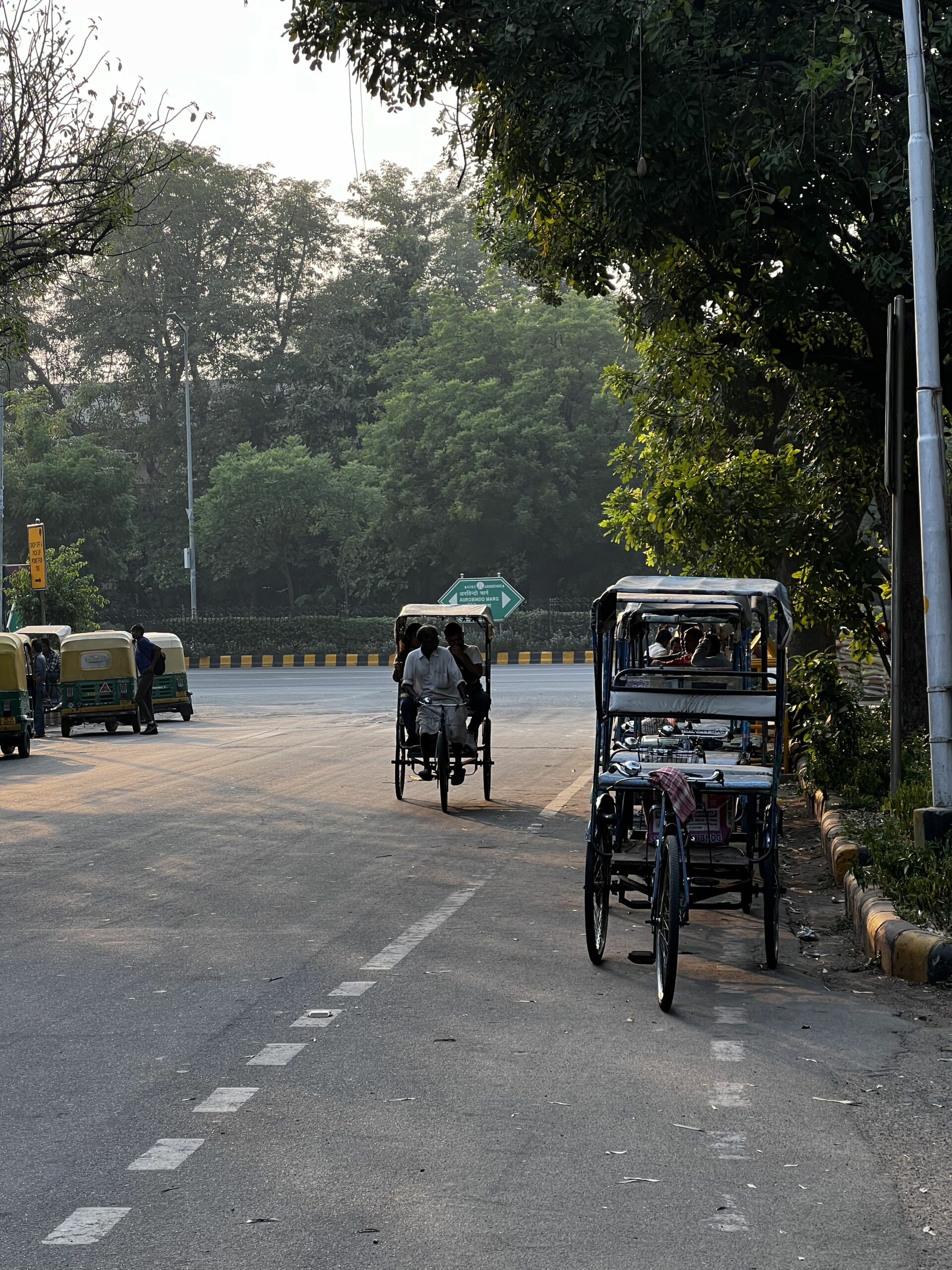
One of the most populated cities in the world. Mention Delhi to most travellers, and they’ll likely share stories of how dirty and chaotic it was. While that’s likely largely true, the city also houses many places that make you forget that you’re in this crazy megacity. In the three months that I’ve lived in the southern part of this bustling city, I’ve found pristine parks, charming and snug cafes, lively nightlife, and picturesque historical forts.
The city also breathes authentic Indian culture with its big local markets and religious festivities.
The infrastructure is another plus point. The metro system is very accessible, which makes it easy to get around the city. Metro tickets go for as little as Rs. 40 ($0.48) to get you from point A to point B. It’s also quite easy to meet other travellers in Delhi, as most of them first arrive in the capital before heading to their next destination. There are some free walking tours that you could attend to connect with other travellers, and see some of the historic city while you’re at it.
Network and power connectivity are great, and you’ll find many cafes that offer a great workspace, good Wi-Fi, and a good cup of coffee.
Delhi is fairly safe, however as a woman, some places might feel a bit intimidating. Personally, I tend to avoid going out alone in the dark or going to places in old Delhi by myself. However, in the south of Delhi, I’ve never felt unsafe or intimidated, even when roaming around alone – just make sure to not do it at night.
Top 3 places to check out in Delhi:
- Lodhi Gardens – A beautiful, serene park in the Lodhi District, South Delhi, with gorgeous old forts dating back to the 15th century – almost like an open-air museum. It’s a great picnic spot, and a lot of families and friends gather here to chill and relax in the evenings or on the weekends.
- Khan Market – This market offers a variety of cute grocery stores with imported foods from all over the world, street shopping, and nice cafes that are great to work at and meet others doing the same.
- Hauz Khaz – The market has a lot of nice clubs for that occasional night out. It has a nice park next to it called Deer Park where you can witness beautiful ruins and all kinds of birds.
Avoid these areas:
- Paharganj and Mahipalpur – These two areas are quite popular among tourists who come to Delhi for the first time, however it’s better to avoid them. They are dirty, crowded, and full of people who seem nice at first, but try to scam you the next second. It also feels unsafe, especially for women travelling alone.
Pune – The City Of Opportunities
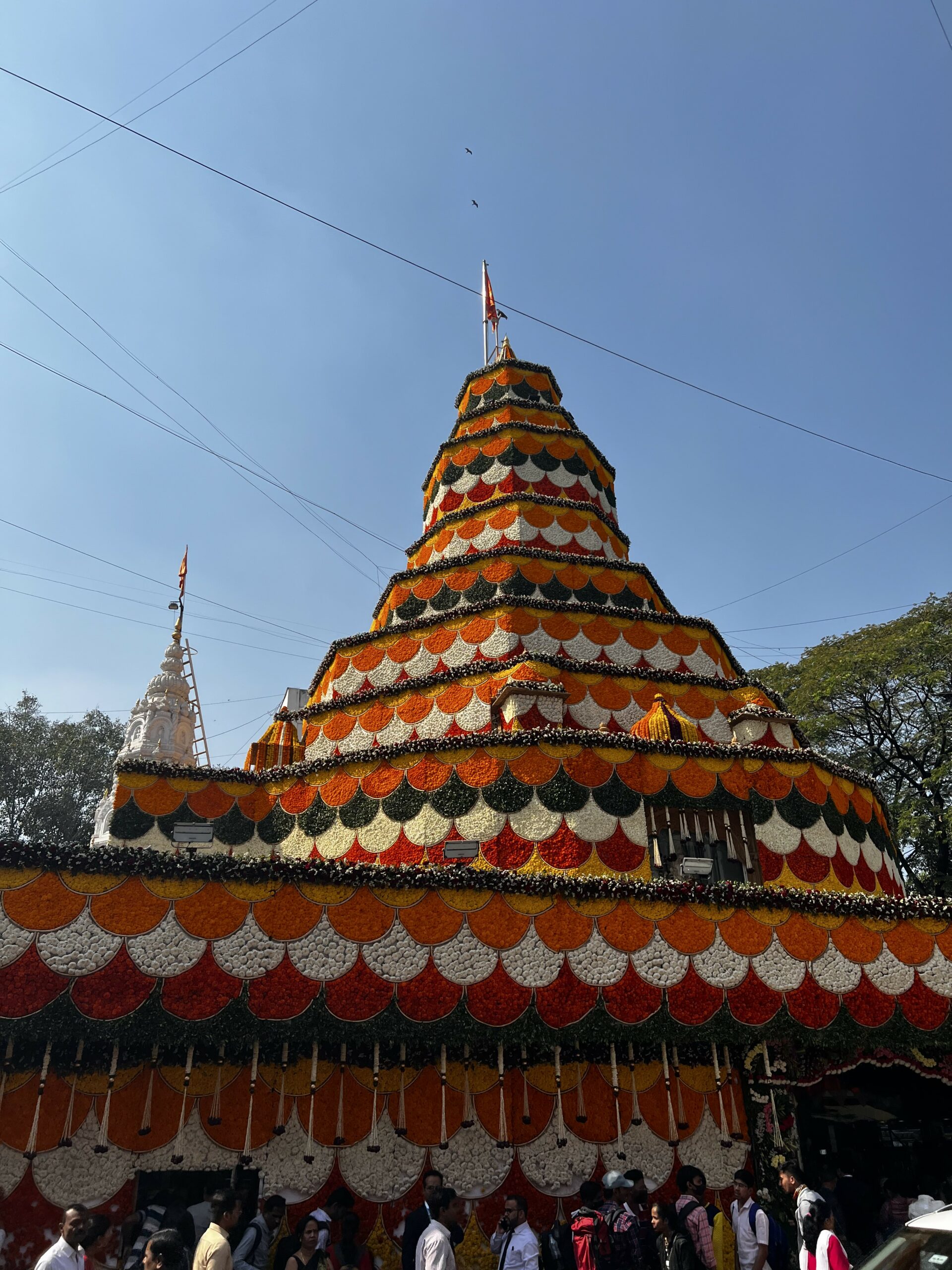
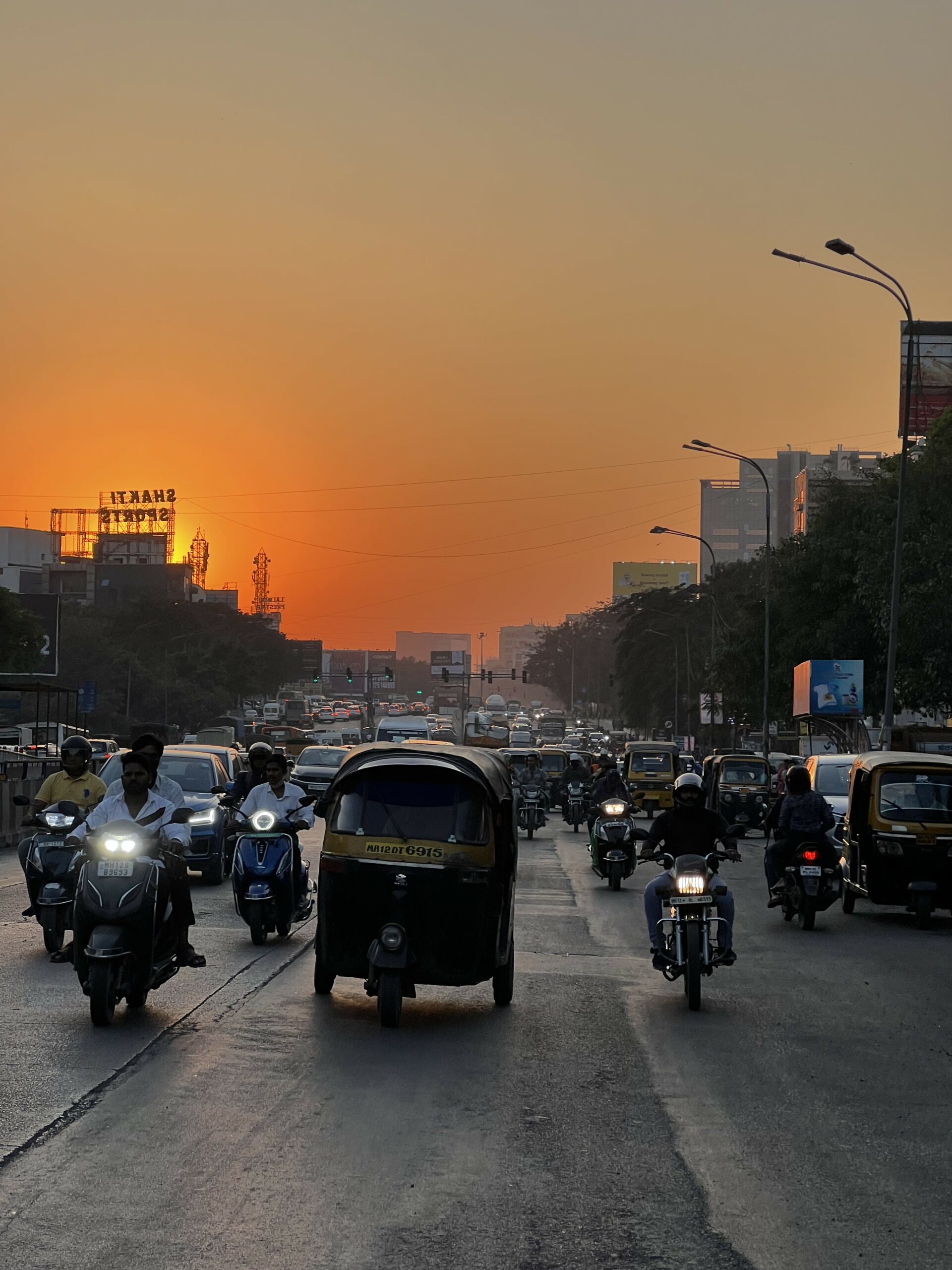
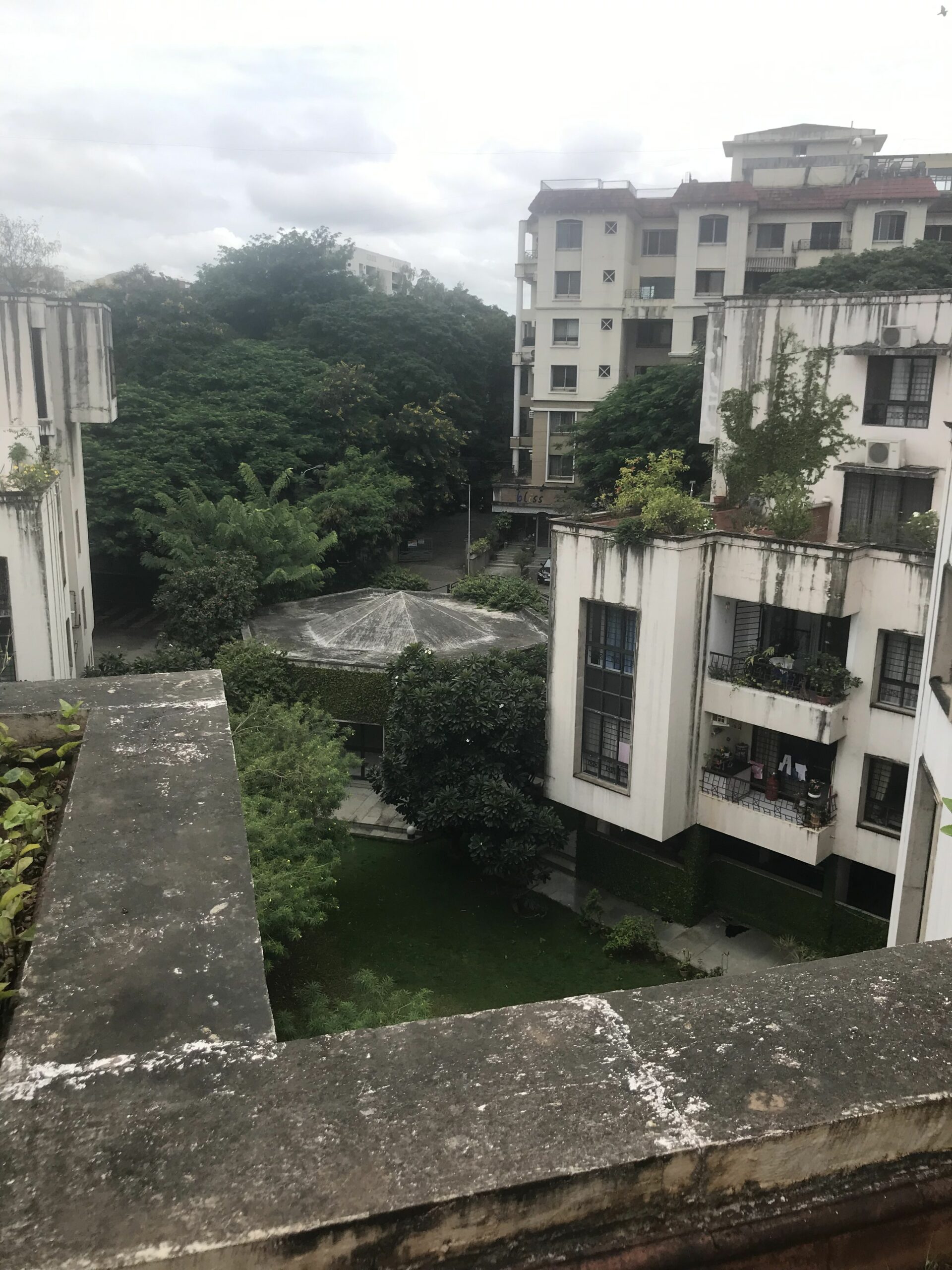
Just a three-hour drive from Mumbai, Pune isn’t just a top-notch education hub; it’s also a hidden gem for digital nomads. Nestled in the heart of Maharashtra, Pune is a unique blend of culture, history, and modern life. I’ve spent over five months here, and it truly felt like home. It’s also one of India’s safest cities, and I can vouch for it. I’ve never felt unsafe during my stay, and I’ve met many fellow expats who share the same sentiment.
Compared to bigger cities like Delhi and Mumbai, Pune is more budget-friendly while still being highly convenient. The city is working on a metro system, and the city provides easy access to nearby tourist hotspots like Mumbai and Goa for quick weekend getaways.
Pune is rapidly turning into a tech and startup hub with a thriving IT sector. The digital nomad scene is on the rise, with plenty of coworking spaces and excellent Wi-Fi connectivity. As much of the business scene is dominated by startups, the city offers great business opportunities for those looking to expand their portfolio. Charming cafes dot the city, offering fantastic workspaces and a great way to connect with other digital nomads.
Top 3 places to check out in Pune:
- The French Window Patisserie – A cozy outdoor cafe with the two cutest dogs on the planet. They often organise art exhibitions or workshops you could attend. They also have great wifi which makes it a good cafe to work at. I can also vouch for their cheese croissants – they’re the best, trust me.
- Tulsi Baug – If you want to experience local life, check out Tulsi Baug market. It houses a beautiful Ganesha temple that you can visit and a huge market where you can buy everything you can think of.
- Dighi Hills – Just outside of Pune lies this hilly area called Dighi hills, where you can trek and watch the sunset on your off days.
Himachal Pradesh – The Serene Himalayas
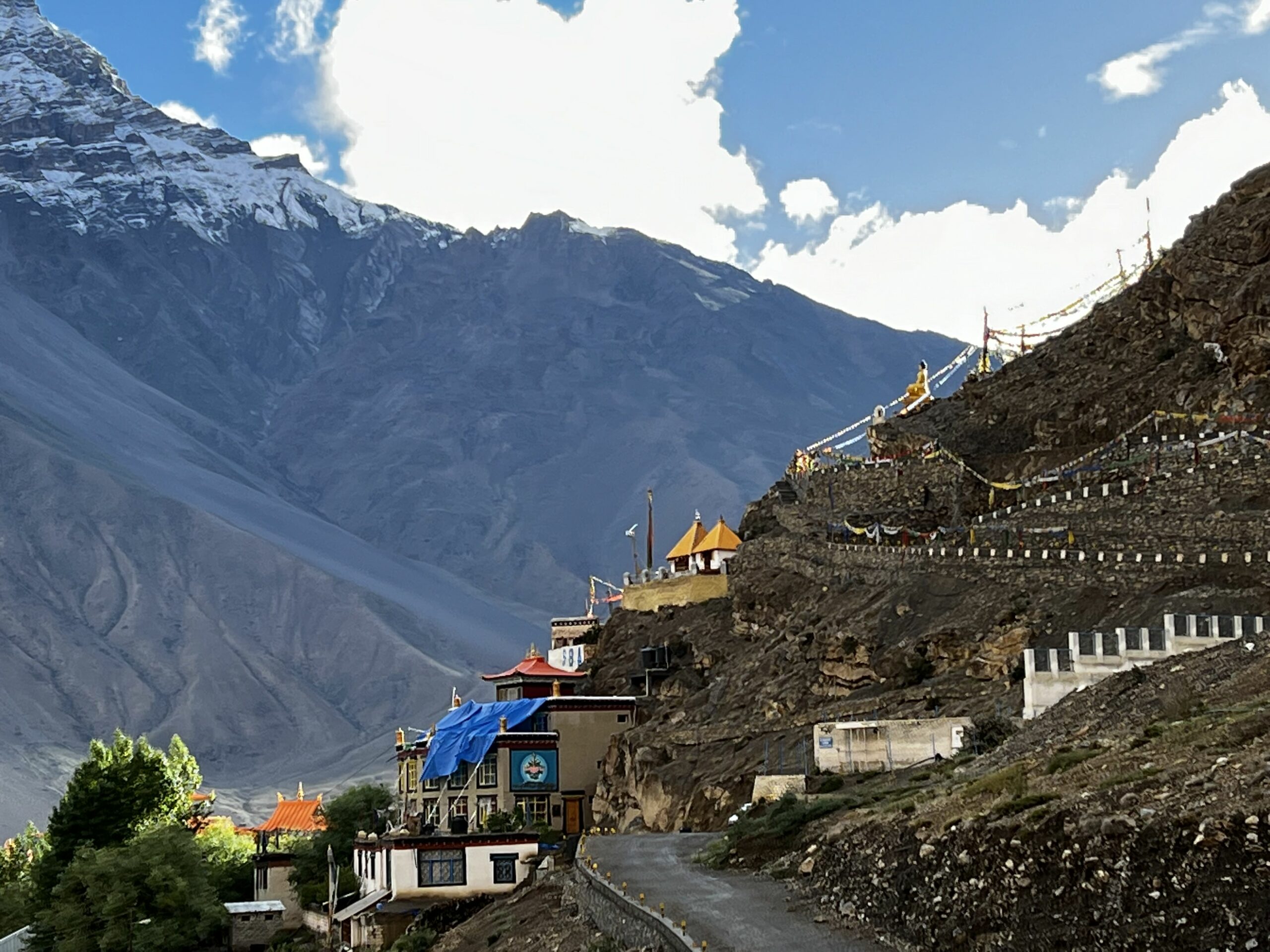
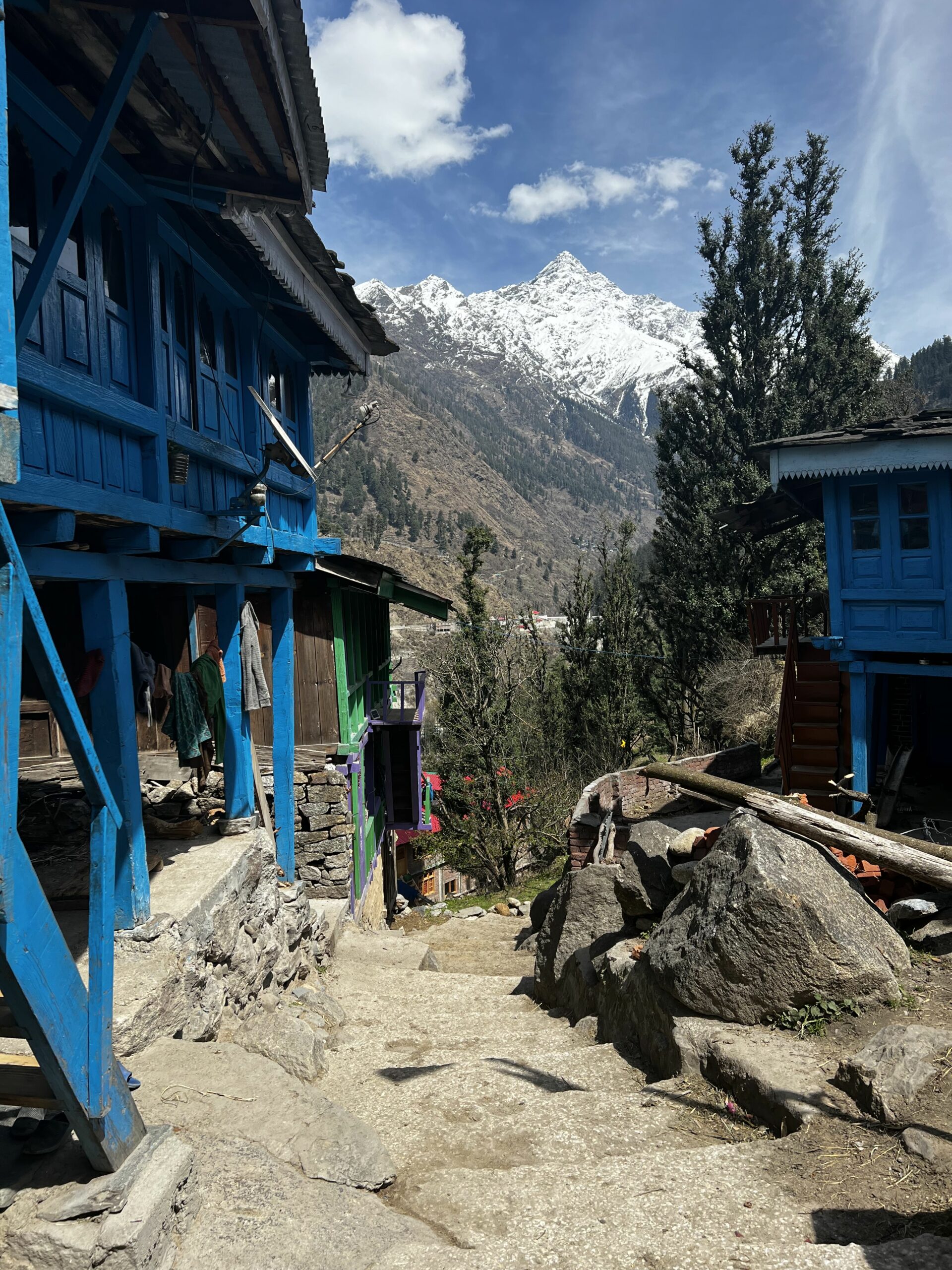
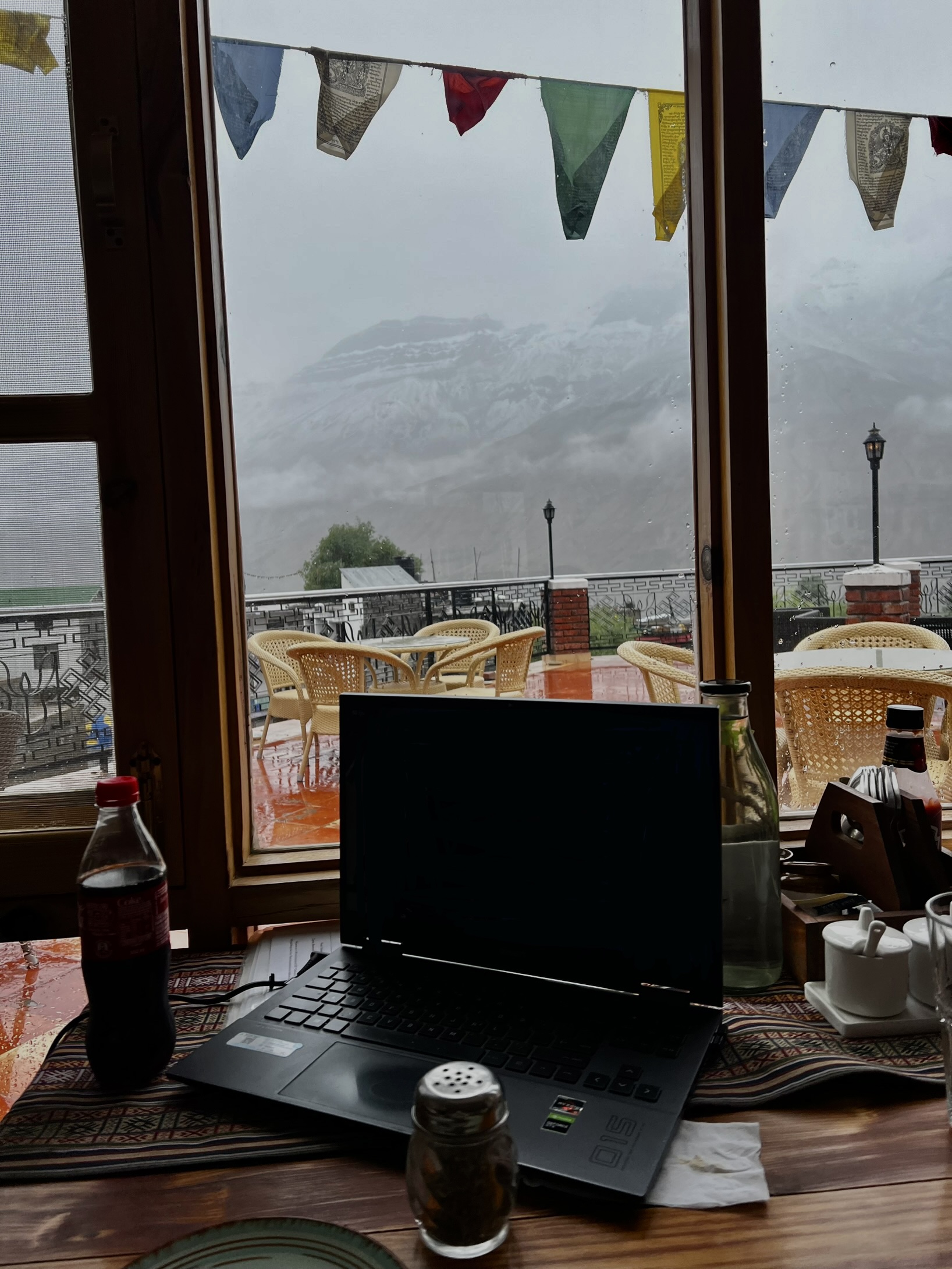
Who doesn’t dream of that picture-perfect morning view of majestic mountains right outside their window? Himachal Pradesh fulfills that dream effortlessly. With huge forests, snow-capped peaks, boundless meadows, and a silence you won’t find anywhere else, this place is nothing short of paradise, especially if you want a calm and natural environment while working remotely. During my stay, I split my time between the charming town of Kaza and the idyllic village of Pulga, both of which are great places for those wanting to experience true peace and love to walk around in nature. The natural beauty is unparalleled, but due to its remote location, you might face some challenges unique to this place.
Pulga, for instance, recently got what can barely be called a road – it’s more of a mud trail – leading to the village’s entrance. Once you arrive, a 15-minute trek is required to reach the heart of the village. Accommodations like homestays and guesthouses offer the simple pleasures of village life, and I found myself staying in a homestay for just Rs. 500 ($6) a night. While the experience is undoubtedly picturesque, it’s essential to note that both Kaza and Pulga are remote, which means internet connectivity can be quite unpredictable. Frequent power cuts, at times lasting days or weeks, are also a reality of everyday life here. Furthermore, there are no ATMs in Pulga, with the nearest one requiring a one-hour drive. In Kaza, there is one ATM situated in the town. However, it was out of order when I found myself stranded there, and even when it was operational, it was usually out of cash.
It’s crucial to plan your visit wisely, as Himachal Pradesh can be full of challenges during the monsoon season (June to September) due to construction and roadwork happening across the region. Landslides and other natural disasters are common during this period. I experienced a landslide in Kaza that severed the road, leaving me without electricity or service for a week. However, in the summertime, Himachal Pradesh transforms into a captivating wonderland, offering a refreshing escape from the hot Indian summer and a chance to cool down and enjoy the beauty in the cool mountain air.
Top 5 places to visit in Pulga & Kaza:
- Devraj Cafe, Pulga – A cute, traditional Himachali cafe with a nice fireplace to heat up to when it’s cold. They also own a generator, offering power backup during the town’s frequent power cuts. It’s a very social cafe, and many travellers come here to socialise. The owner is very welcoming, too, and they offer the best hummus pita in town.
- Fairy Forest, Pulga – This enchanting forest it beautiful, and many people camp here in the summers. It’s filled with huge pine trees and small little waterfalls where you can refill your water bottles during your excursions into the wilderness.
- Cafe Piti, Kaza – A very cozy cafe with the most amazing views and incredible coffee. They also offer good wifi and a good atmosphere to work in. While I was here I met many other travellers working in the cafe.
- Kaza Monastery – A beautiful monastery that looks over Kaza town. If you decide to take a little walk up the hill, you’ll find a beautiful buddha statue watching over the valley.
- The Himalayan Cafe, Kaza – This cafe is great, and the owner is very helpful. I stayed here most of my days when I got stranded in Kaza, as the owner knew everyone and helped them financially and otherwise during a time of crisis. The cafe also offers power backup and a traditional cake that you should definitely try out: Sampa Cake.
Finding Suitable Work in India for Digital Nomads
So you would want to start your digital nomad journey in India, but have no idea how to begin or where to look? Hopefully, my experience can help you achieve that dream and give you some direction. I always dreamt of being able to earn money while exploring the world, and when I left for this adventure, I never thought that the dream would unfold the way it did.
Most digital nomads I’ve met in India work as:
- Writers – either for their own blog/website or Western companies
- Digital marketing professionals
- Designers
- IT developers, or startup founders
Some were there for inspiration, and others simply to ‘explore themselves’.
My own digital nomad journey started after I connected with another remote worker at a cafe in Pulga. I talked about my dreams and ambitions, and he recommended some websites to check out and explore, which is really where it all started. I’m currently working as a graphic designer and translator on a freelance basis. I got most of my projects through online remote-work platforms, though I’ve also got work from people I connected with during my travels. I occasionally dabble with teaching yoga online, and most of my clients in that domain come from Instagram DM’s.
I’d recommend looking at platforms such as Upwork (where I got this job), Fiverr, and Remoteok, where you can easily apply for remote jobs and get paid smoothly.
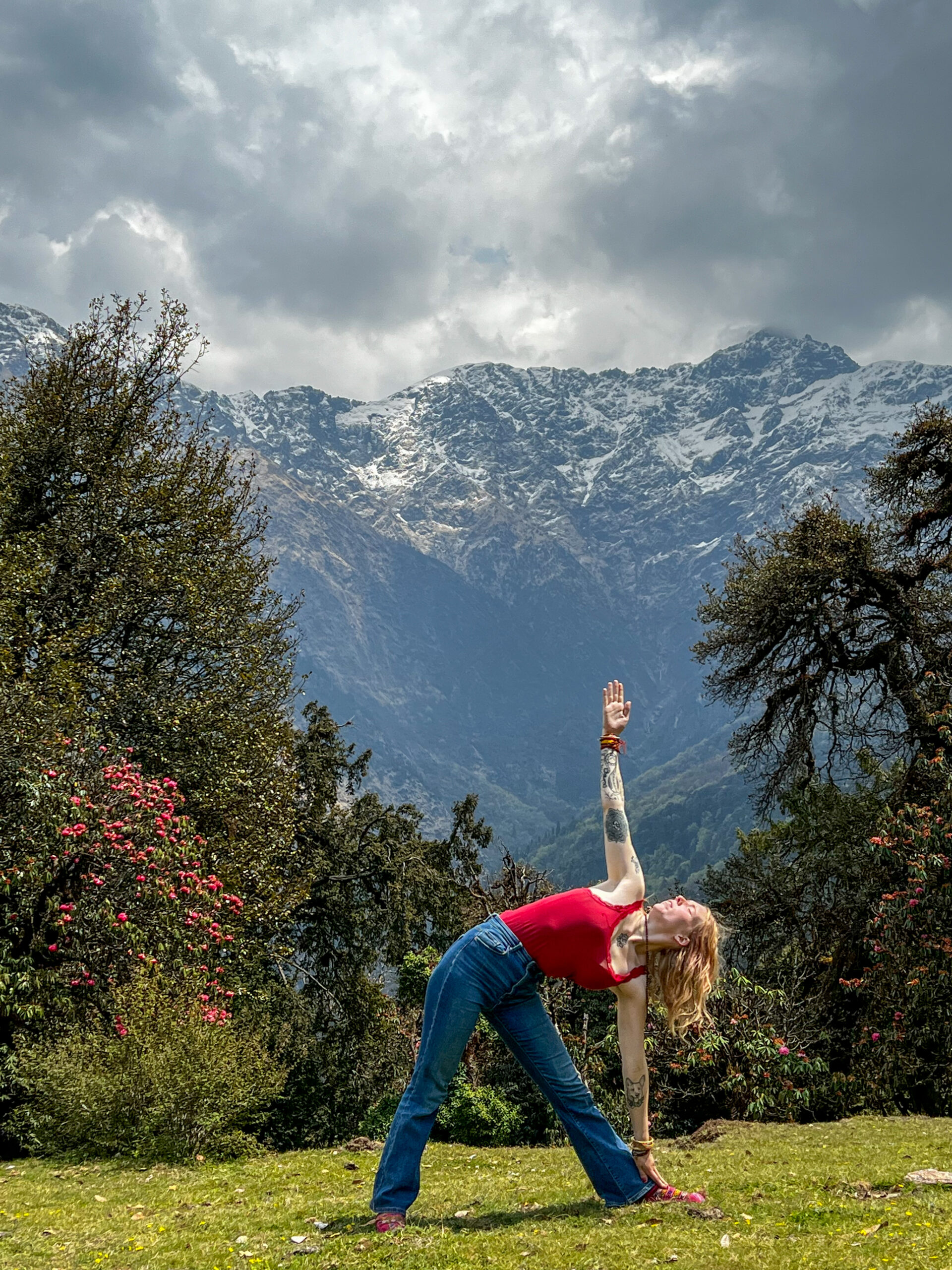
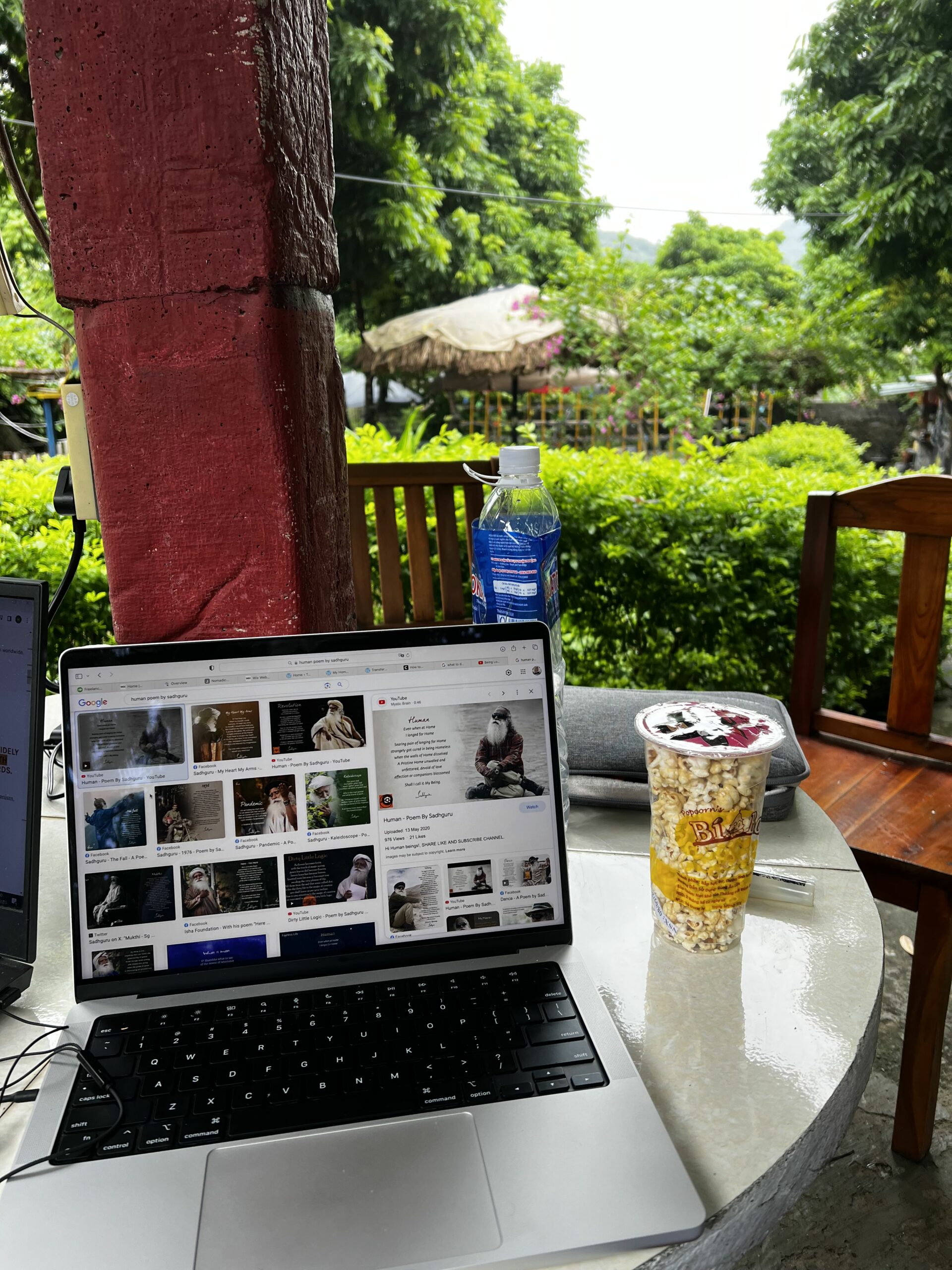
Jobs Digital Nomads Can Do In India
Digital nomadism is rising in India, although it’s not as popular as other destinations like Bali or Thailand. During my travels in the country, I encountered a limited number of individuals combining work and travel. Among them, English-language writing seemed to be the most popular occupation, possibly because of the immense inspiration for creative work you can get throughout this beautiful country. To excel in this field, a strong command of the English language, grammar, and a unique perspective are key.
Here’s a short list of jobs digital nomads can do in India:
- Freelance Writing – Blogging, content creation, and journalism are great options for remote work in India, given its rich cultural diversity and the many stories to be told. It is, in fact, a whole different world compared to the one most of us know.
- Software Development – India’s booming tech sector provides numerous remote opportunities for software developers, programmers, and coders.
- Virtual Assistance: Administrative and personal assistant services can be offered remotely to clients worldwide.
- Translation and Transcription: Multilingual skills can be put to use in translating documents or transcribing audio content for clients around the globe.
Where To Look For Jobs In India?
The most straightforward path to securing a remote job is by utilizing the online platforms I mentioned earlier. In my case, I received numerous inquiries related to Dutch language skills and creating introduction videos in the Dutch language, as I am, you guessed it, from The Netherlands. Often, the tasks are relatively simple, such as managing emails or schedules as a virtual assistant.
To enjoy a comfortable life in India, I’d recommend aiming for a monthly salary of up to $1200.
How Do You Get Suitable Work For Travel?
Being a graphic designer and translator, I find these professions perfectly suited for working on the road. The flexibility they offer – where work revolves around project deadlines rather than fixed hours – aligns with my nomadic lifestyle. What’s more, the portability of these roles, relying on simple digital tools and a laptop, allows me to effortlessly adapt my workspace to different locations as I travel. Many of my tasks can be conveniently completed through online platforms, demanding only a stable internet connection, making these professions an ideal choice for my nomadic lifestyle.
The Gritty Moving Details | Moving To & Living in India
You’re eager to embark on a fresh chapter of life in a foreign land, perhaps in India. Yet, finding a new home, building connections, and making friends can seem a bit daunting at first. So, how exactly does it all come together?
Tips for making new friends
One of the biggest fears most people might have is ending up completely alone when embarking on a solo journey in India. In my experience, it’s very easy to make new connections in this country. For example, I met someone on my flight to India, who then invited me to her home for a home-cooked meal.
I’ve managed to make many local and traveller friends by just speaking with strangers, and I’m still in touch with many of them. I’ve met them in cafes, parties, on the street, or through WhatsApp travelling groups. If you’re looking to make friends, it’s great to go on a day tour or join a travel group on WhatsApp.
Here’s a link to a great traveller WhatsApp group for India: https://chat.whatsapp.com/H8cXuNXuZdRDIW5C0EsZa6
Is learning the language necessary?
In my experience, most people you’d run into in India are well-versed in the English language. However, it can definitely make things easier to speak a bit of the local language, especially for everyday chores like commuting, shopping, etc., as the accent could sometimes be a problem. Knowing basic words and sentences to converse in can your life a bit easier.
I personally don’t speak Hindi fluently, but I do know a few phrases here and there to get by. Plus, you’re treated a bit more warmly if you speak the local language by most.
Finding Accommodation & Place To Call Home
In my experience, I prefer to initially explore new destinations like I’m on holiday, allowing me to assess their appeal. I’d recommend taking a similar approach. Start by planning a trip to a place that’s been on your bucket list and holds genuine interest for you. Once you’ve arrived, you can make an informed decision on whether it’s a location where you’d like to extend your stay for remote work. I wanted to visit Himachal Pradesh for a long time and decided to check it out for week. I loved it as soon as I got out of the bus, though, and ended up staying there for many months. That’s how it should be, in my opinion.
Research is the most important part of finding the ideal place to call home, even if for a few months or so.
I’d recommend looking for a property once you’re in the city or town of your choosing and not book/rent anything beforehand. Stay in temporary accommodation – like a hotel – and do your research there. Personally, that’s how I do it. When I first arrived, I asked for some recommendations from the hotel staff, and they gave me some websites to look on. I reached out to some of the real estate agents and by the next day, I was in their office signing the lease.
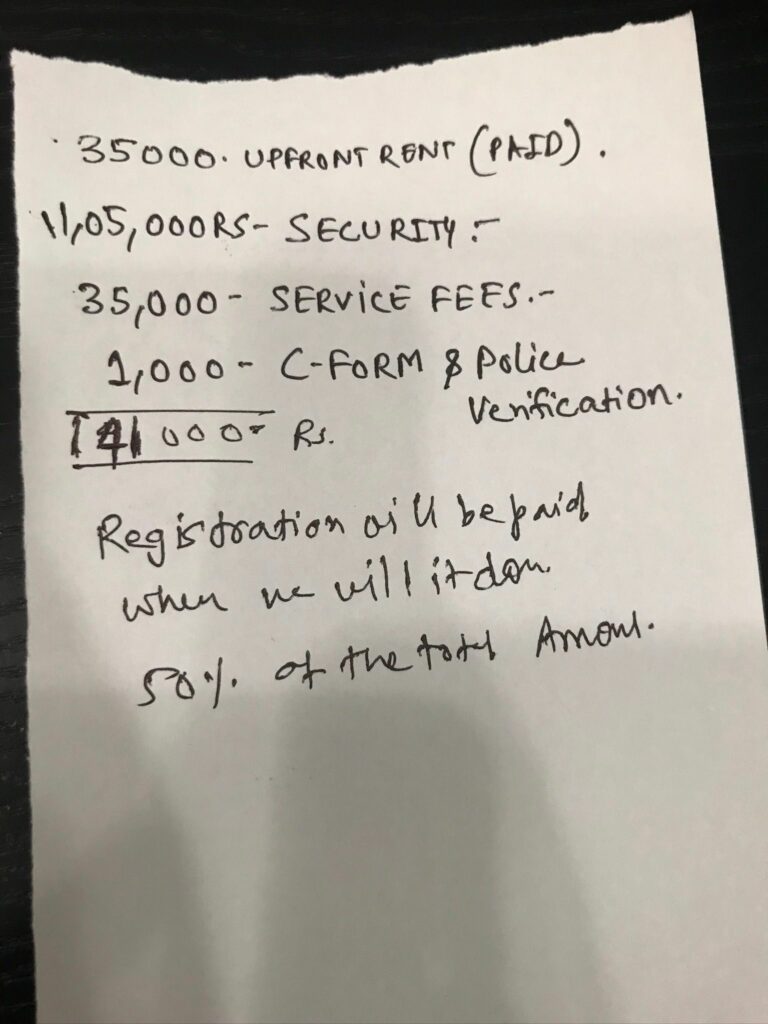
Facebook Groups are also a great resource for finding long-term accommodation. For my house in Pune, a real estate agent named Rani Wilfred helped me get the right house, and was very helpful in general. Look for ‘ Real Estate Women Associates India – REWA India‘ on Facebook. I didn’t have many belongings to move around, which I was eventually thankful for. (We don’t need as many things as we think).
Where To Look To Find Properties
Some places you can use to find a property in India:
These websites are among the most commonly used platforms for finding long-term accommodations in India. When inquiring, it’s crucial to have a direct discussion with the real estate agent to determine the minimum rental period. Many places also permit subletting, like my property in Pune, and I encountered no issues with this arrangement.
Specifically, I’ve found 99acres to be a highly reliable platform, and I utilized Airbnb in Goa. In the latter case, I usually start by booking a few nights to assess if the accommodation meets my requirements, before going for a longer-term arrangement.
Choosing a Neighbourhood to Live (Avoid Non-Gated Communities)!
Choosing the area might even be more important than the accommodation itself. Personally, I did some research on the internet for each place I’ve settled down in, mostly to get a third person’s idea on the best areas for someone like me, along with asking locals, like the hotel staff. It’s best to explore those areas in the day and maybe take a stroll around in the evening to get a bit of a feeling of what the place is like.
Some questions you can ask yourself before deciding anything:
- Do other foreigners live in the same area?
- Does the street look maintained/clean?
- Are there nice cafes nearby?
- What are the kind of people you see around? Business people? Workers?
It’s important, especially in India, if the street looks clean/maintained, as this indicates what the area is like. The ‘good’ areas get taken care of by the government, whereas the other areas are often neglected in terms of services and government facilities. It’s also good to keep an eye on what kind of people you see around – is it mainly business people? Students? Foreigners? When I chose my place, I made sure that the roads around the area were clean and well-maintained, along with plenty of cafes to work from and supermarkets nearby.
I once stayed in a non-gated society without thorough research, leading to an uncomfortable experience in a less desirable area. To avoid this, I strongly recommend conducting thorough research beforehand, attending house viewings diligently, and paying close attention to the neighborhood before making your choice.
In India with most rentals you will also often get maids. They come twice per day and cost around $35 dollars per month, so many monthly rental prices include this service in the price. You can additionally pay $45 dollars/month for cooking services included.
The photos below are of the gated apartment I stayed in Pune, which was in a good area:
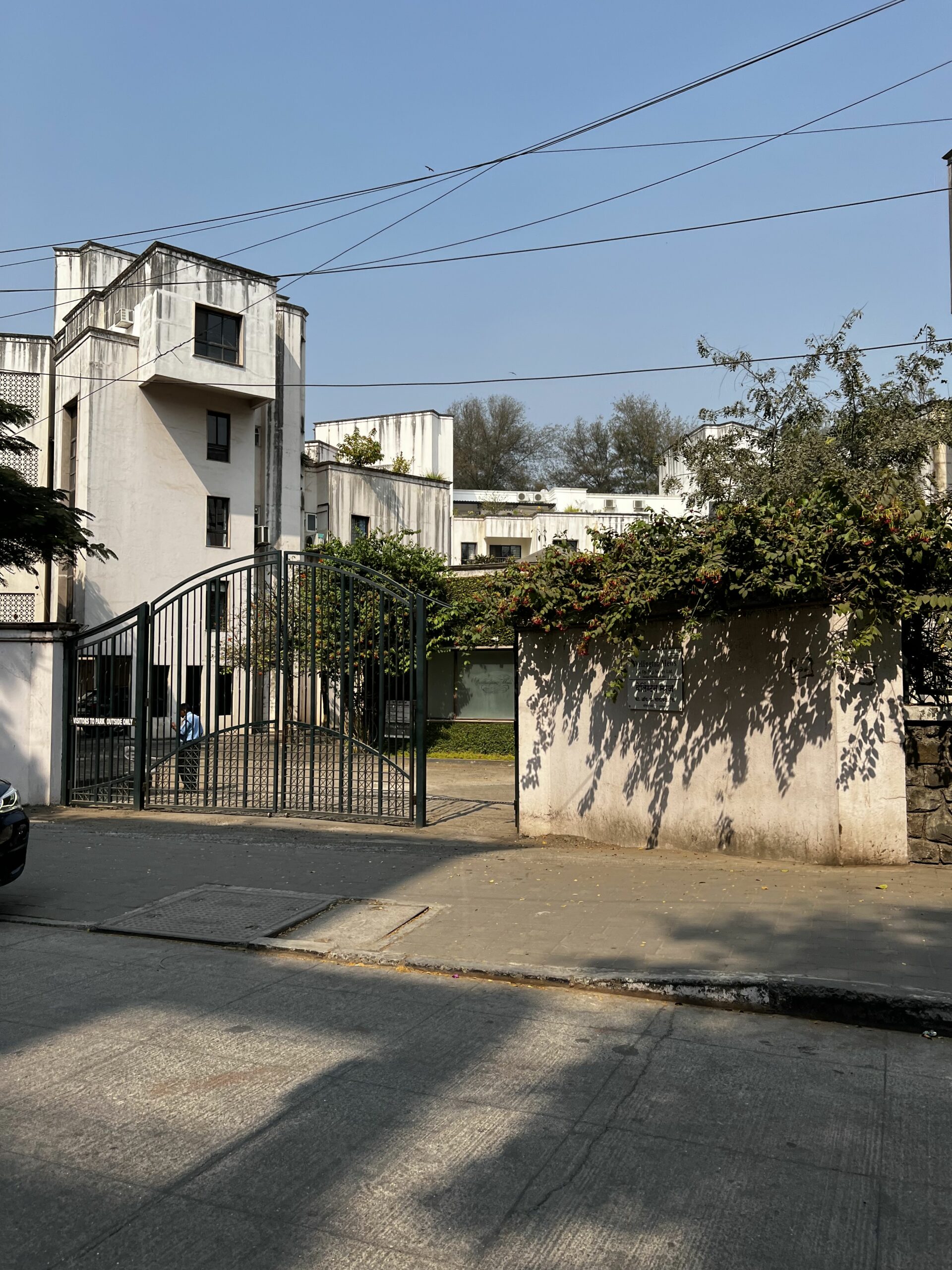
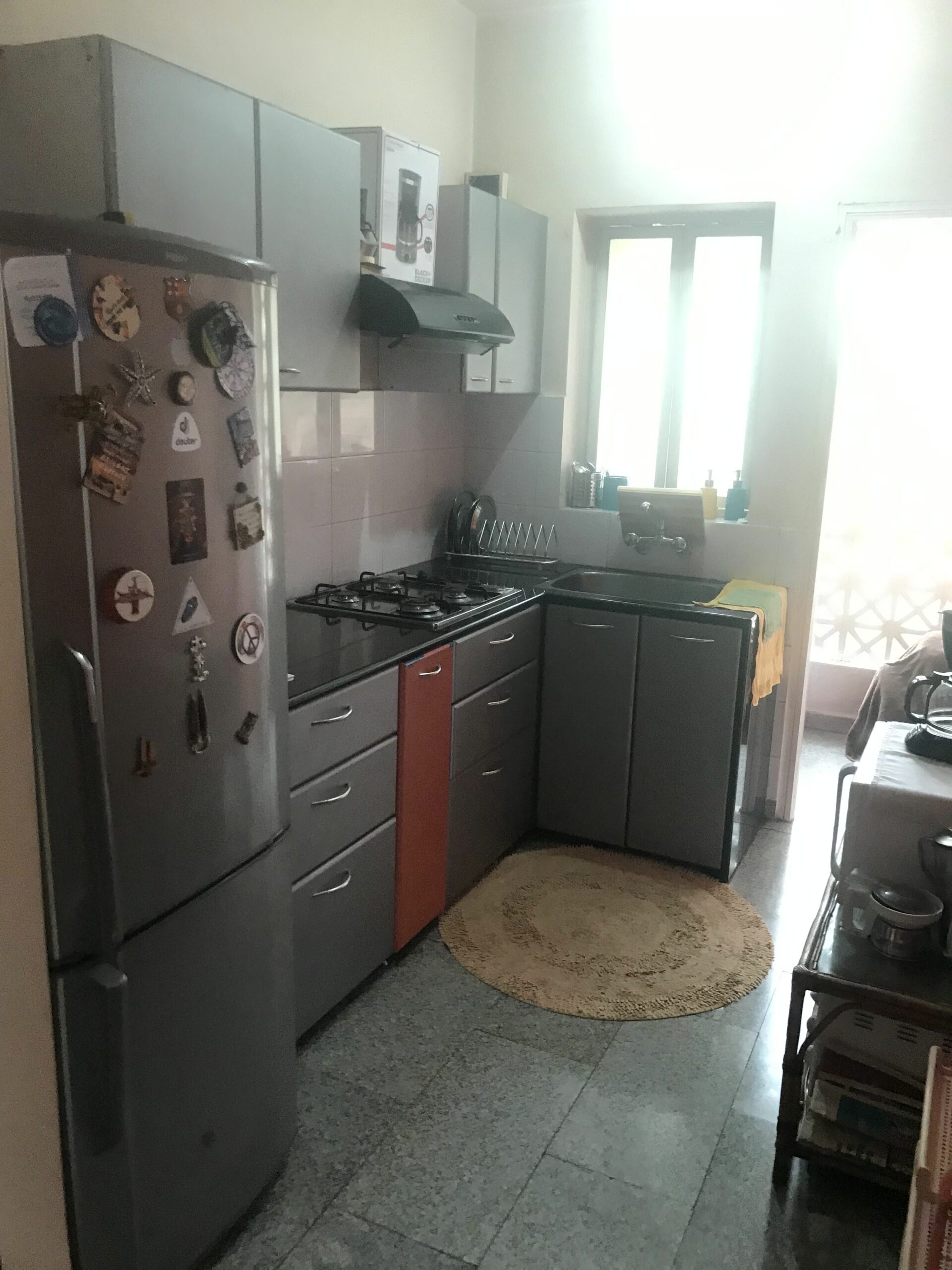
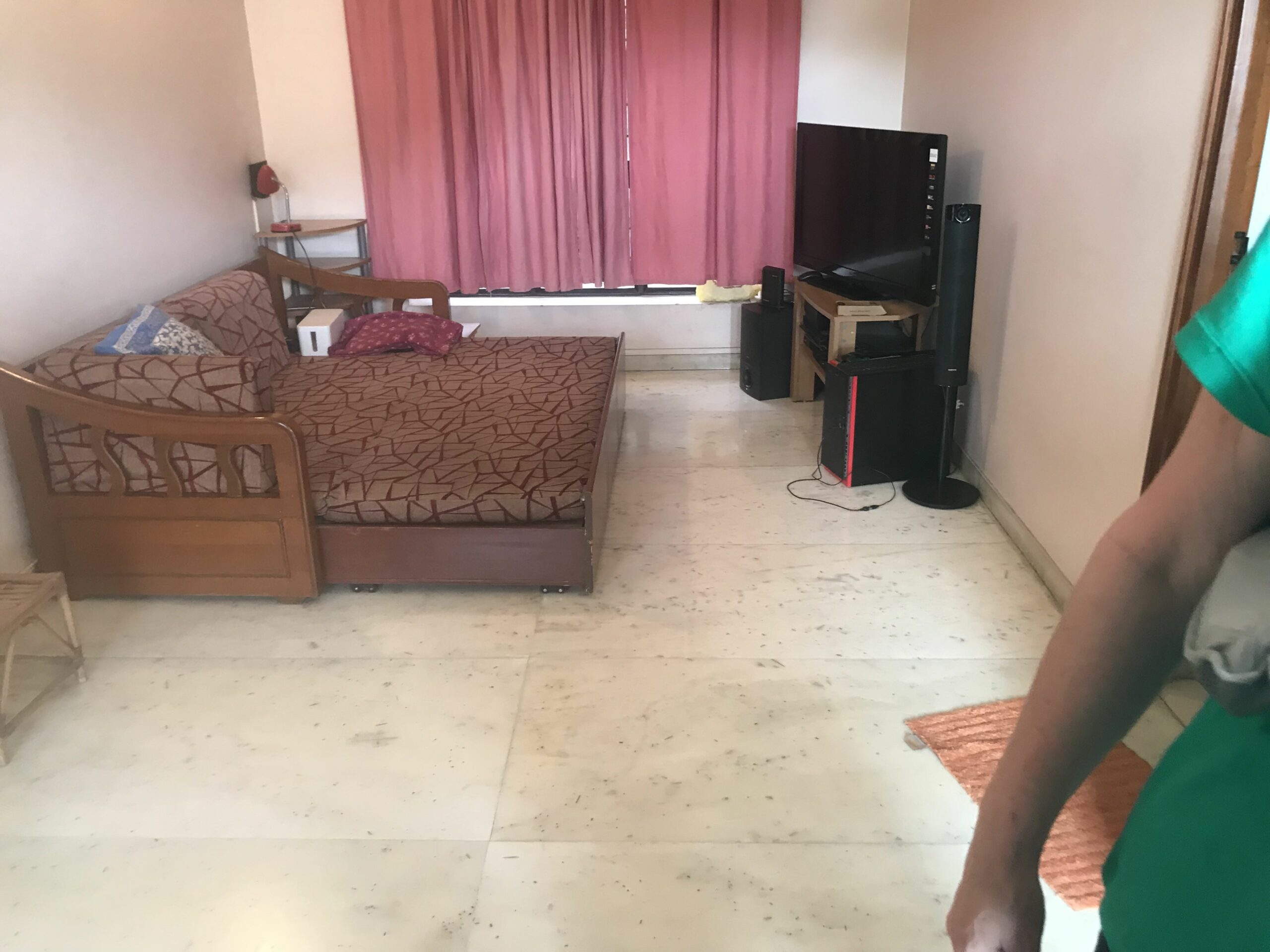
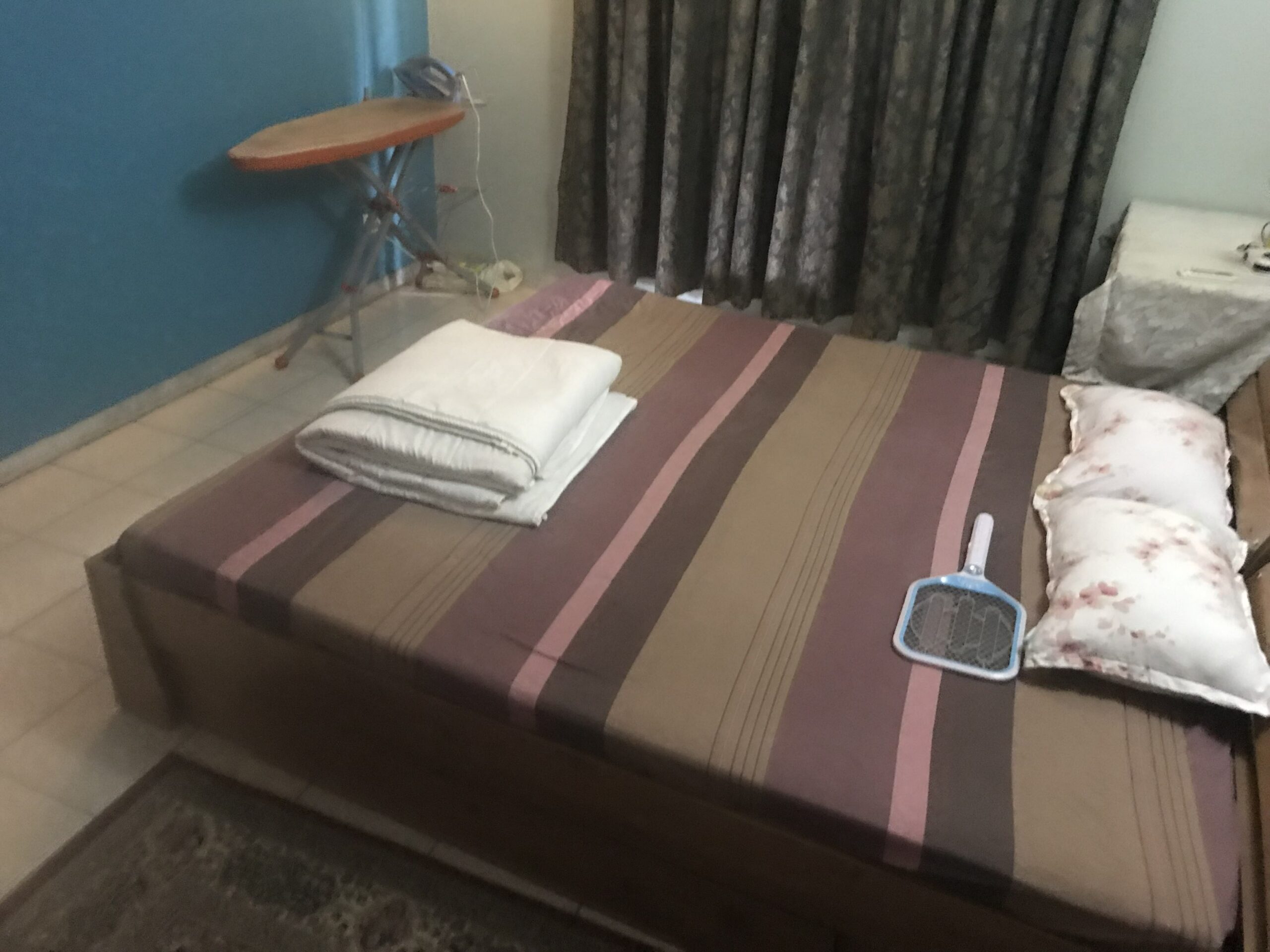
For the gated society I paid around $500 dollars a month, which was quite high, because of the area, swimming pool, maids included, electricity, water, and WiFi.
The below photo’s are of the ‘not so good’ area in Pune I stayed in:
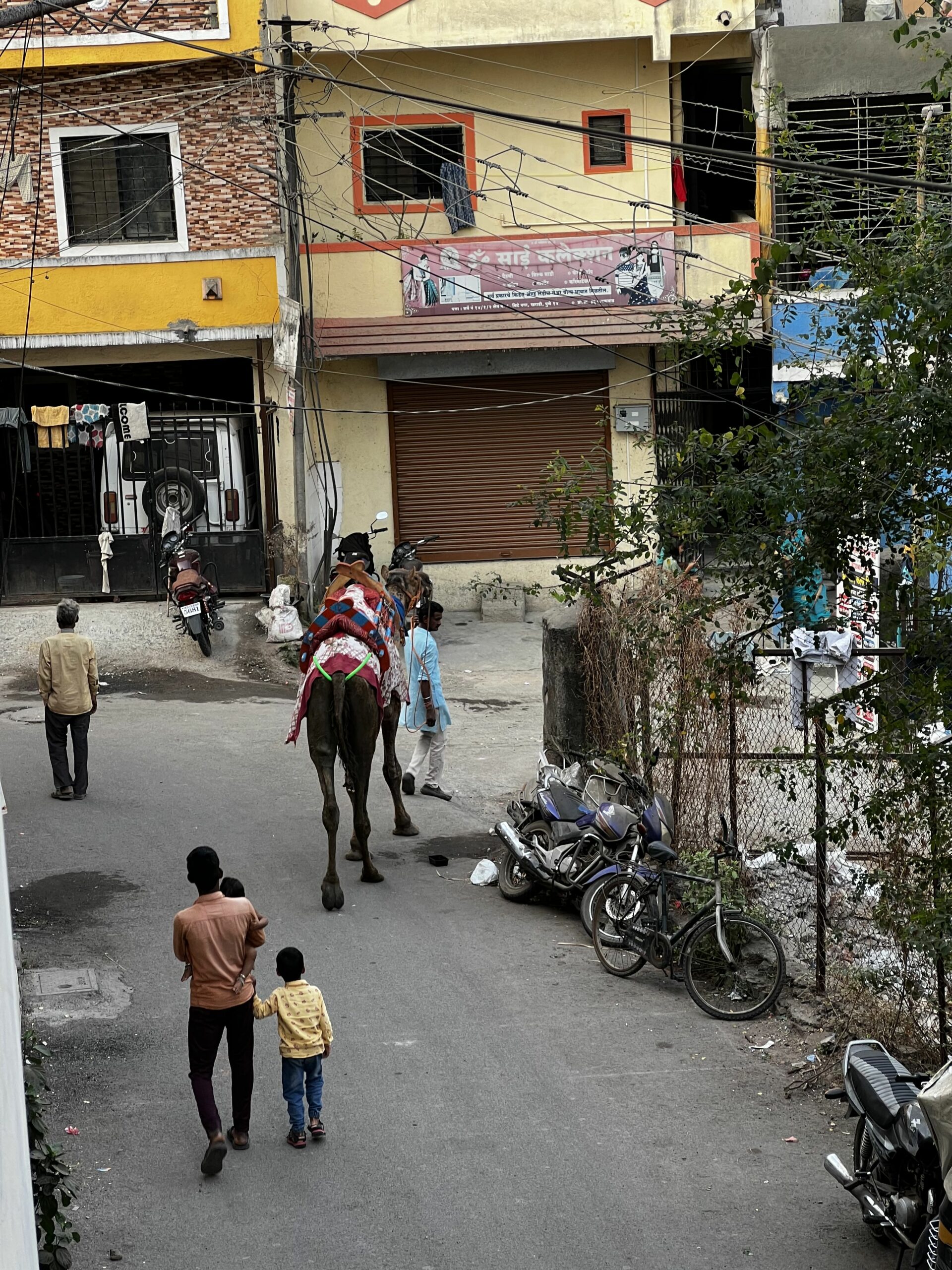
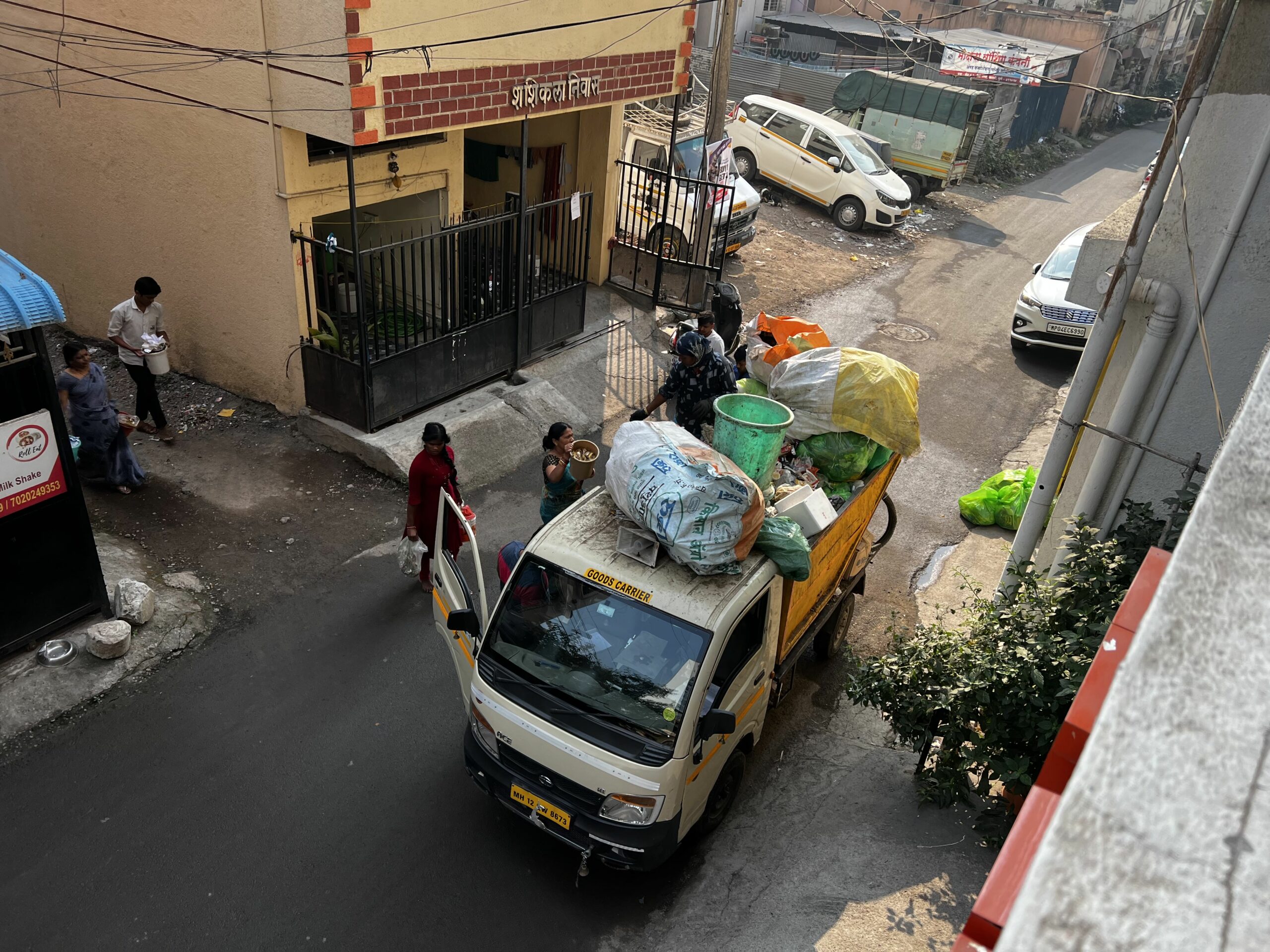
There would be drunk workers walking through the streets, even in bright daylight, I saw many drunk men passed out on the side of the road, and sometimes physical fights would happen in bright daylight.
The nongated society was $350 per month (way too much) as it was through booking.com. It had everything included as well, maids etc, all serviced.
How To Attend House Viewings
When inquiring about a house on platforms like the ones mentioned above, the real estate agent will typically arrange a viewing. The process is quite straightforward. After expressing interest, you’d share your phone number, and the agent will likely contact you via phone call or WhatsApp to coordinate a suitable viewing time. Once a date is chosen, they will provide you with the house’s address for viewing. On the agreed-upon date, you meet the agent at the property, walk through the house, and ask any questions you might have.
It’s essential to keep an eye out for the following details:
- Check for the presence of bugs, such as cockroaches, in the house
- Power backup
- Any leakages or maintenance issues in the entire living area
- Does the house look well-maintained?
- Weird smells?
- What is the living space really like?
Staying Connected in India – SIM Card, WiFi etc. for Tourists
It’s important to have a smooth, functioning connection while working. Here’s a brief summary on the network connectivity in India:
Getting A SIM card in India
SIMs are incredibly cheap in India but can be a bit tricky to obtain as a foreigner. Your best option would be to buy a SIM card from the airport or an Airtel outlet. Airtel is the best provider and offers 5G network connection, with great coverage throughout most of the places you might have on your itinerary.
For more in-depth information on this, check this article about all of the SIM card options available for foreigners in India.
WiFi in India
The WiFi is really good in the bigger cities such as Delhi or Mumbai. However, if you are planning to go to remote areas, it can be much trickier and less reliable. For Himachal Pradesh, for example, you’d find that the WiFi isn’t as fast as you might be used to in the urban areas, nor is it always working. Erratic connectivity of power might play a role here, too, so always make sure to ask for power backup if that’s a priority for your work.
Things can get unpredictable here and it’s always good to prepare yourself for any eventuality, especially if you need to meet deadlines or interact with peers during work hours.
Medical care, dental care, insurance and doctors
Healthcare is quite good and accessible in the bigger cities. The large private international hospitals are usually equipped with state-of-the-art technologies and equipment, though it might be a challenge in the more remote parts of the country. Indian Dental care is also famous around the world, as it’s common for people in the West to come here and get their issues fixed for a fraction of the cost they’d pay in their countries. I’ve only had a great experience with hospitals and dental clinics in India.
Getting Around India
Travelling around is fairly easy in India. There are very affordable modes of transport and they reach almost every place in the country – no matter how remote. Connectivity is good between most places, especially those popular among tourists. If you have to travel short distances, it’s best to go for buses as they’re by far the cheapest mode of transport you can find in the country.
For longer distances, trains are a good option, as you’d have your own comfortable bed, things are better organized, and it’s usually much faster. Within cities such as Delhi, Kolkata, and Mumbai, you can make use of the metro systems that are incredibly cheap and make it much easier to get around the city.
Flights
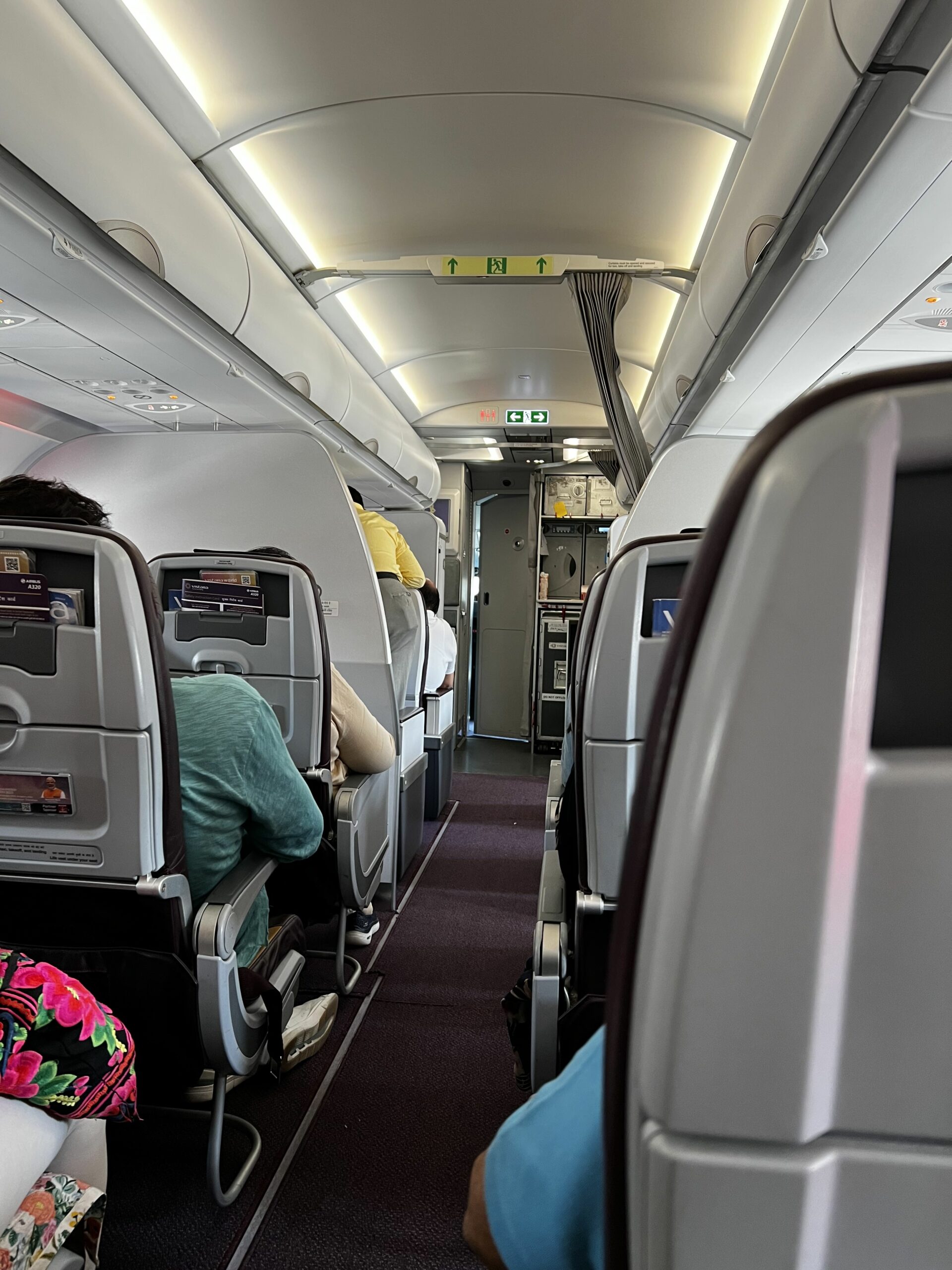
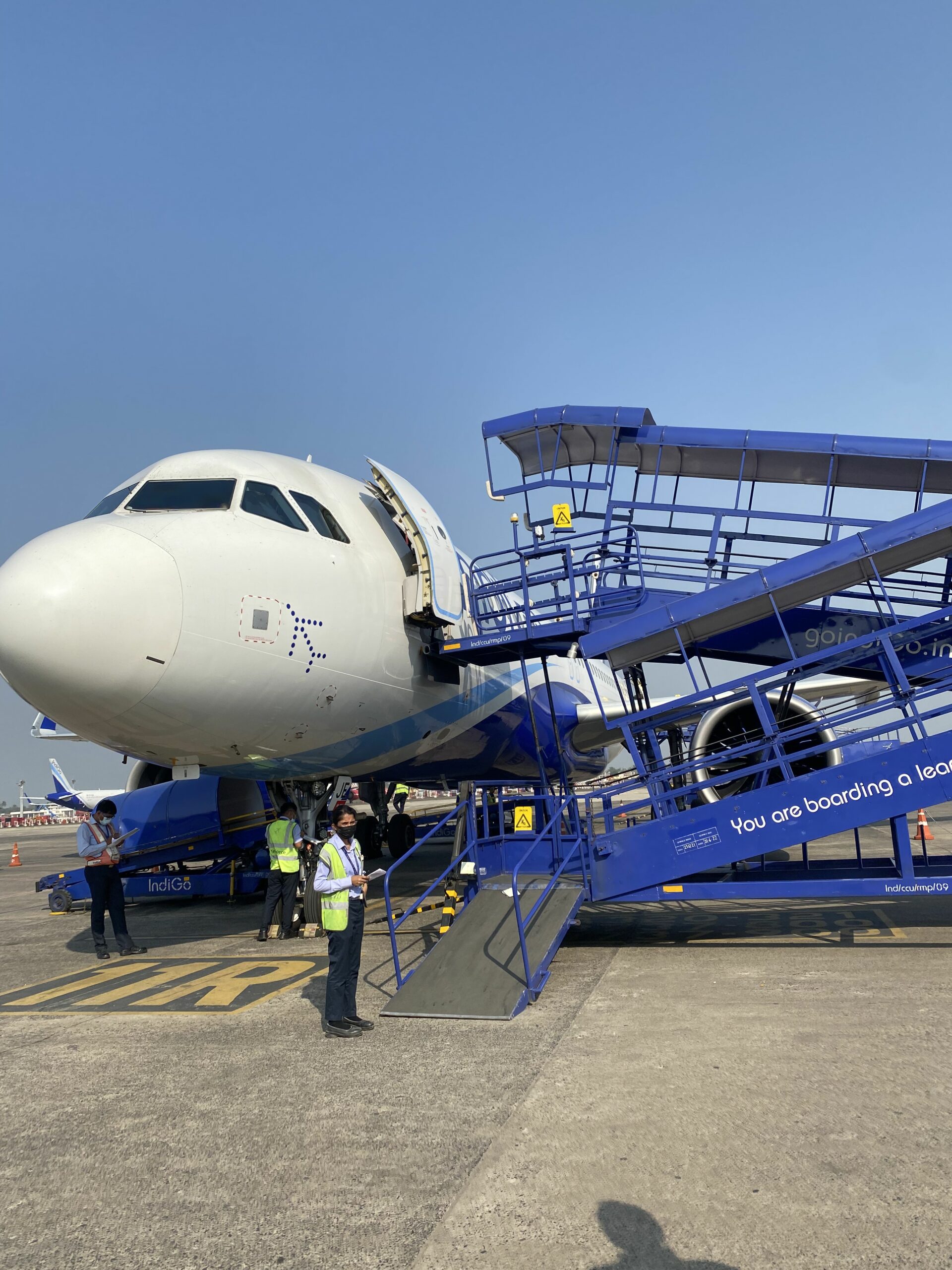
Domestic flights in India are highly convenient and often the preferred mode of transport for covering long distances across the country. It’s an option to save on time and effort spent on the other modes – for a price, of course – which can be especially valuable in a nation as vast as India. With numerous carriers, these flights are not just efficient but also sometimes surprisingly affordable, making them an accessible and cost-effective choice for travelers. IndiGo is one of the most popular airlines and often the most affordable.
You can book flights through Skyscanner or Makemytrip and the prices depend on where you’d be going. The base value of the tickets is $30.
Buses
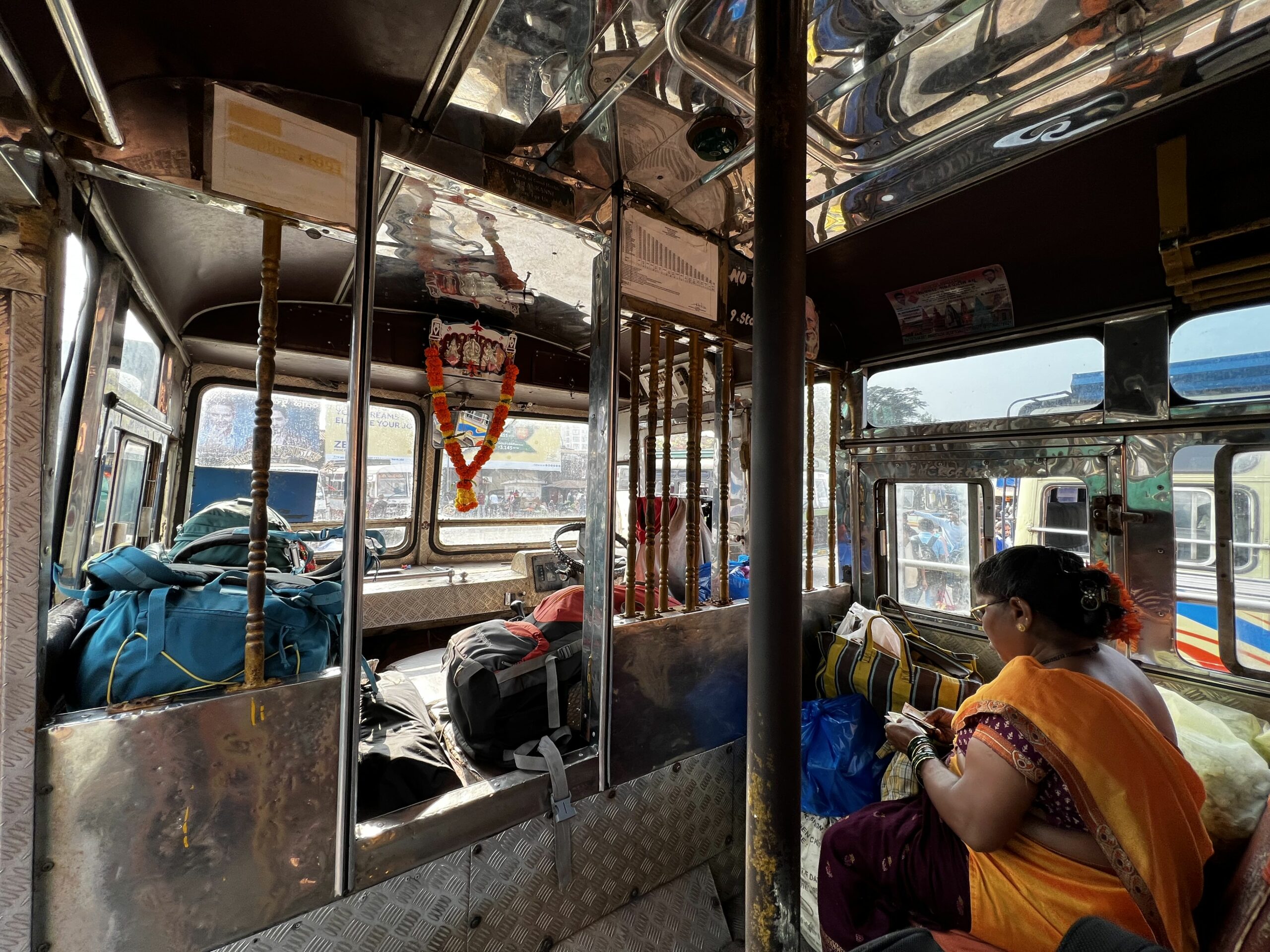
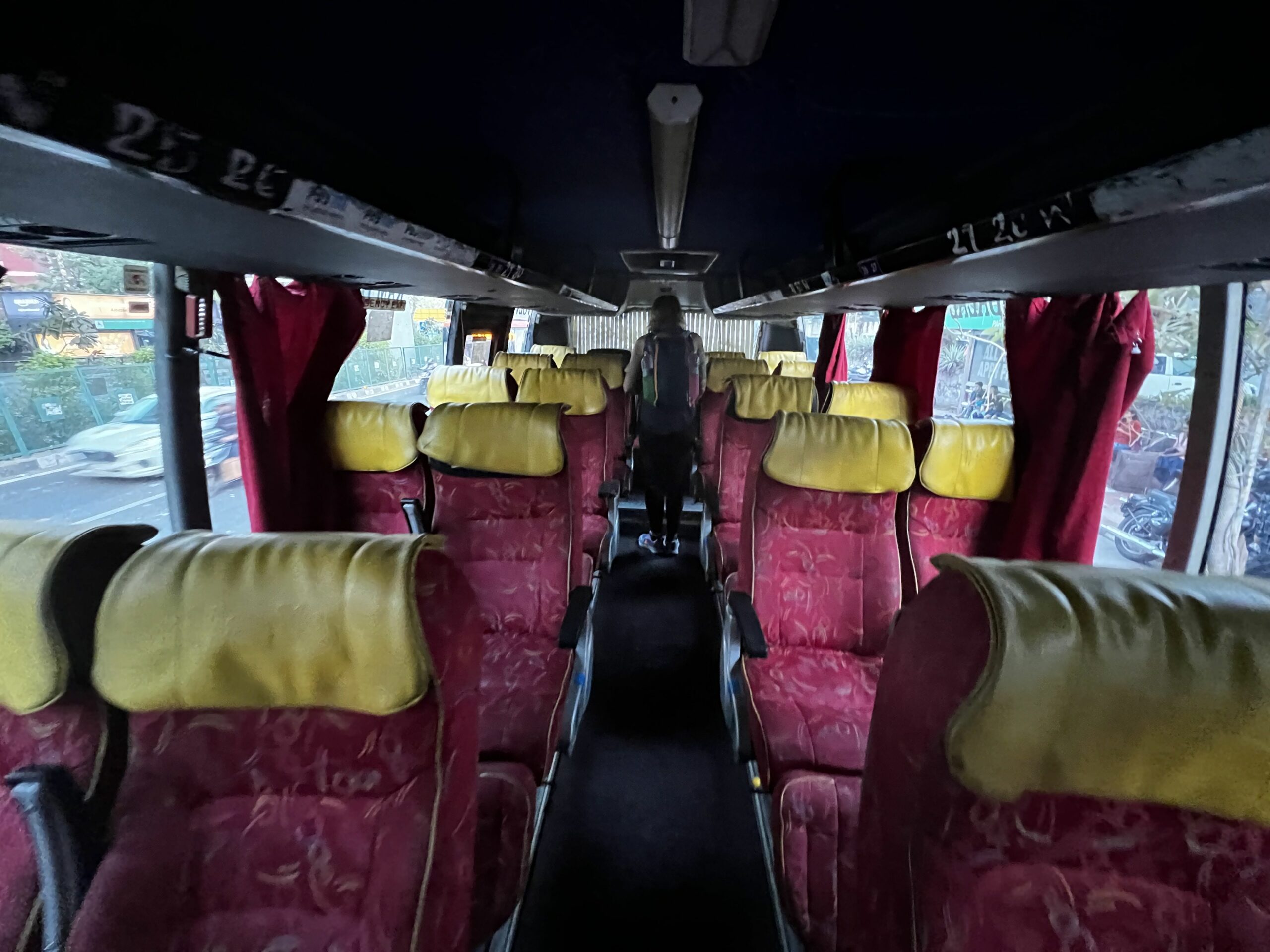
Buses in India are a highly affordable and practical means of transportation, particularly for shorter distances. For longer journeys, sleeper buses offer an actual bed, though there are also seated buses for daytime travels. They are incredibly cheap and often won’t cost more than Rs. 1500 ($18) for longer distances. You can book a bus with Redbus or 12GoAsia.
Local, government-run buses also exist and cover most parts of the country, though it might be better to avoid these due to discomfort, punctuality, and crowdedness. It’s almost always better to opt for private buses.
Trains
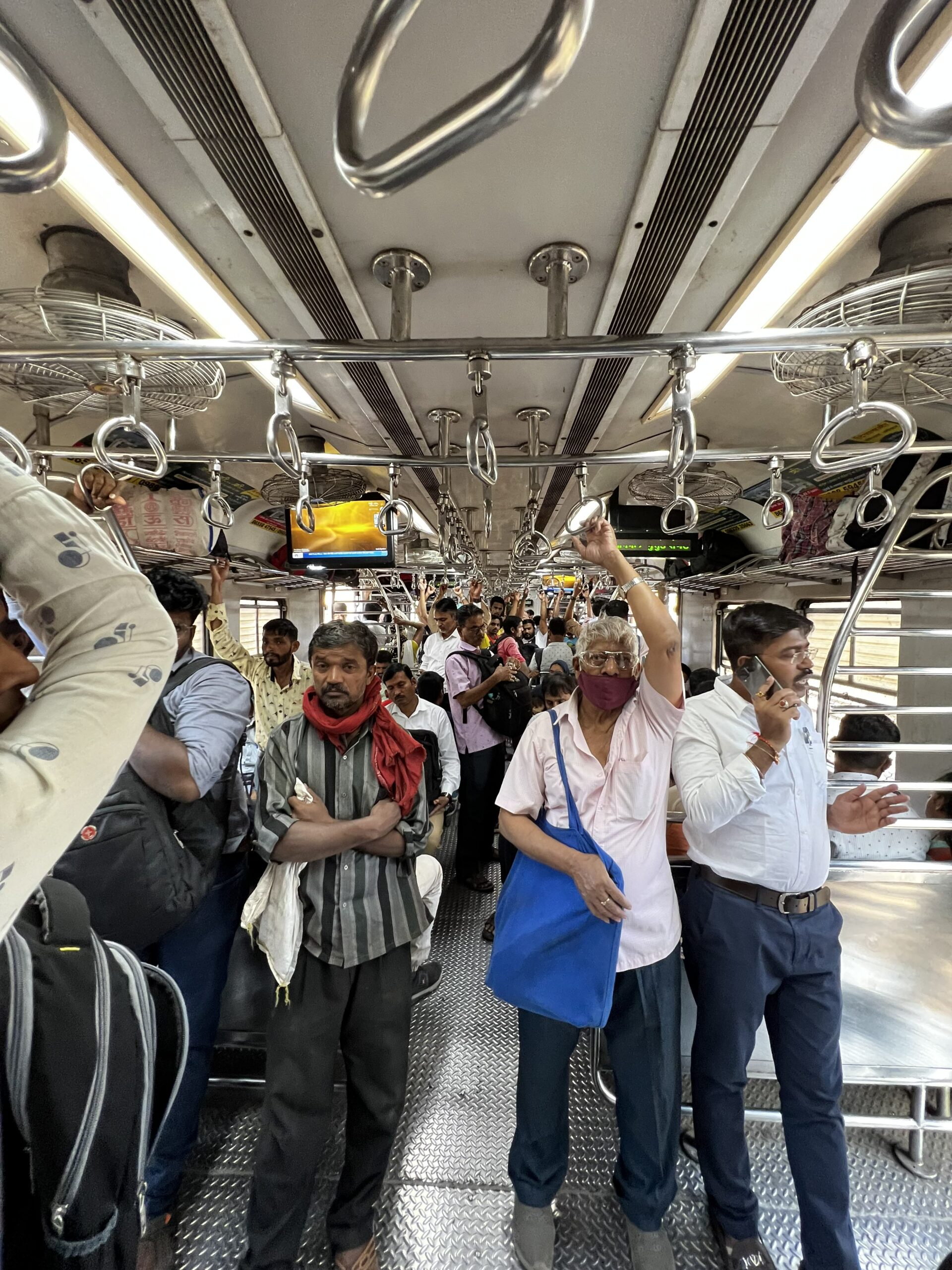
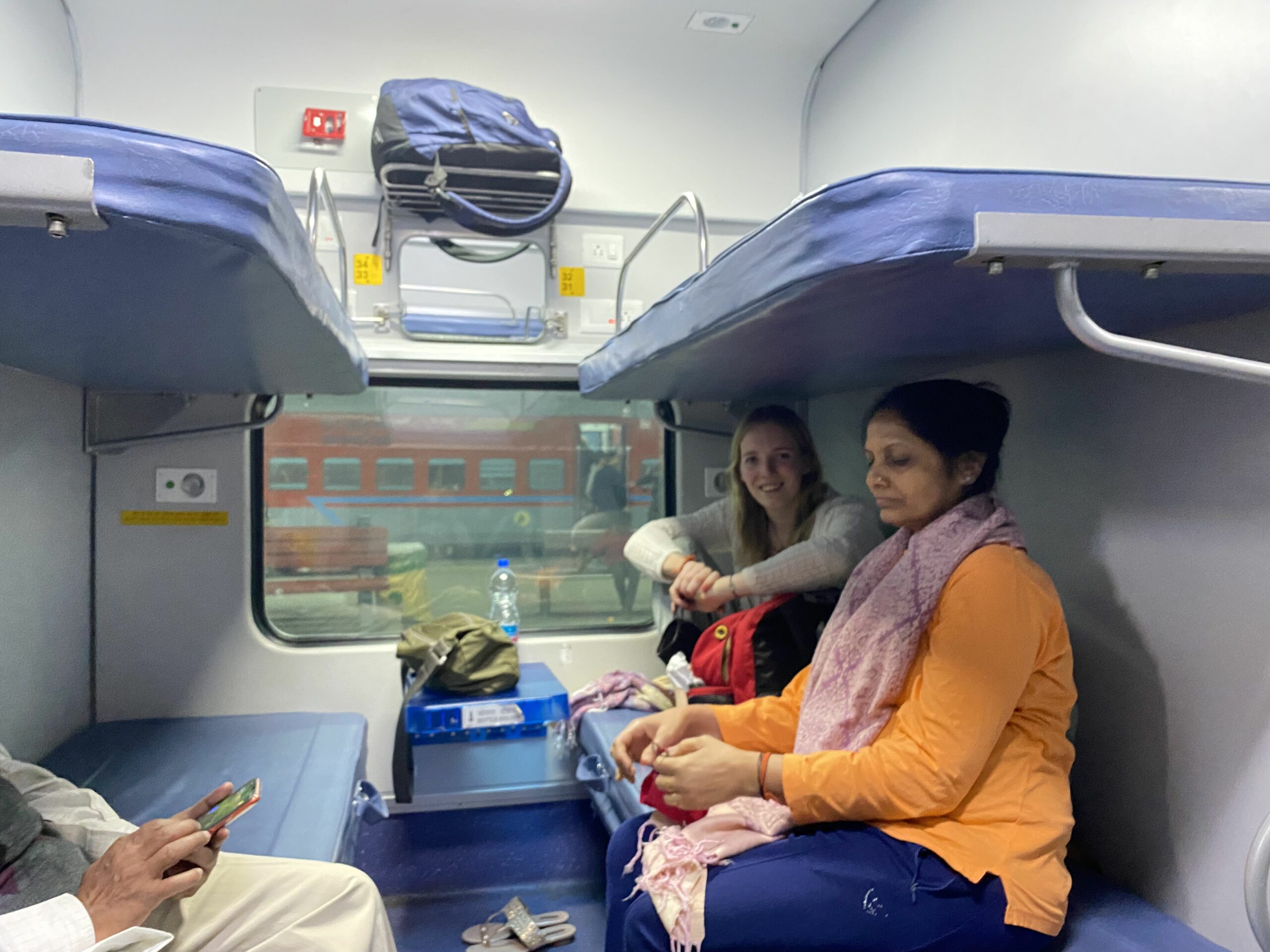
India has the fourth-largest rail network in the world. Trains are great for longer distances and are generally more comfortable than buses. The longer trains offer sleeper options, which offer a comfortable berth of your own that doubles up as a bed at night. Tickets are still incredibly cheap and cover large distances not accessible by buses or other shorter modes of transport.
When choosing Indian train classes for travel, it’s important to avoid the sleeper class as usually it’s very crowded and uncomfortable. Choose the air-conditioned sections to ensure a comfortable journey. You can buy tickets for the trains yourself through 12GoAsia as the official Indian railway website requires an IRCTC account, but if you’re staying long enough I’d advise signing up for an IRCTC account.
Depending on where you travel, train tickets can start from as low as $3. The bigger cities also have their own local railway networks, especially Mumbai. It’s fun for the experience, however, it’s incredibly crowded and chaotic, so I wouldn’t really recommend it for actual travel purposes.
Taxi’s
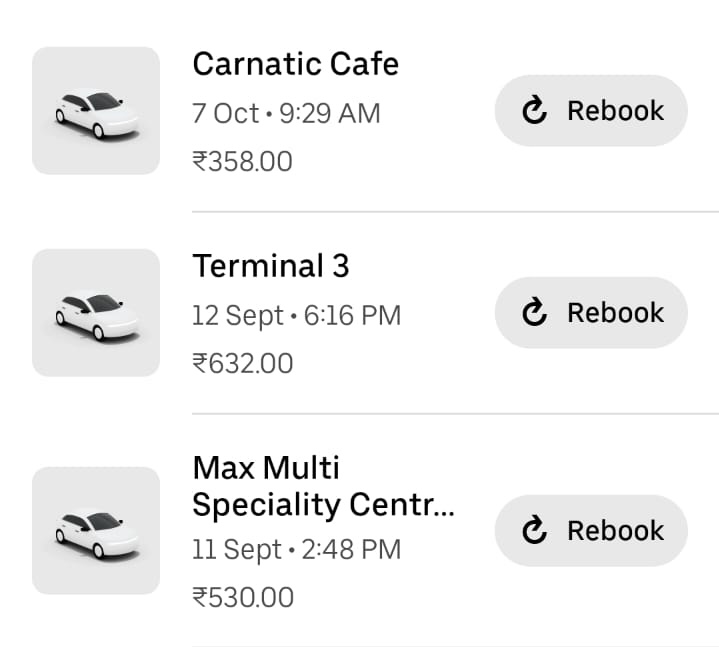
Taxis are super convenient, comfortable, and incredibly cheap if you compare the prices to Western countries. For a journey of 230 kilometers, you might pay around $60, though the prices may vary depending on where you are.
It’s a great option if you have the extra money and are a bit anxious about using the local transport options. Inside the city, you won’t pay much more than $10 dollars to get from one side of the city to the other side.
Uber is available in almost all the big cities, or Ola. Except for some specific areas like Goa, Ladakh, and others where the local taxi unions don’t allow multinational taxi firms.
In these places, you might have to do things the old-school way and go for one of the metered taxis. Speaking of which, always make sure to ask them to use the meter before getting in.
Autorickshaws
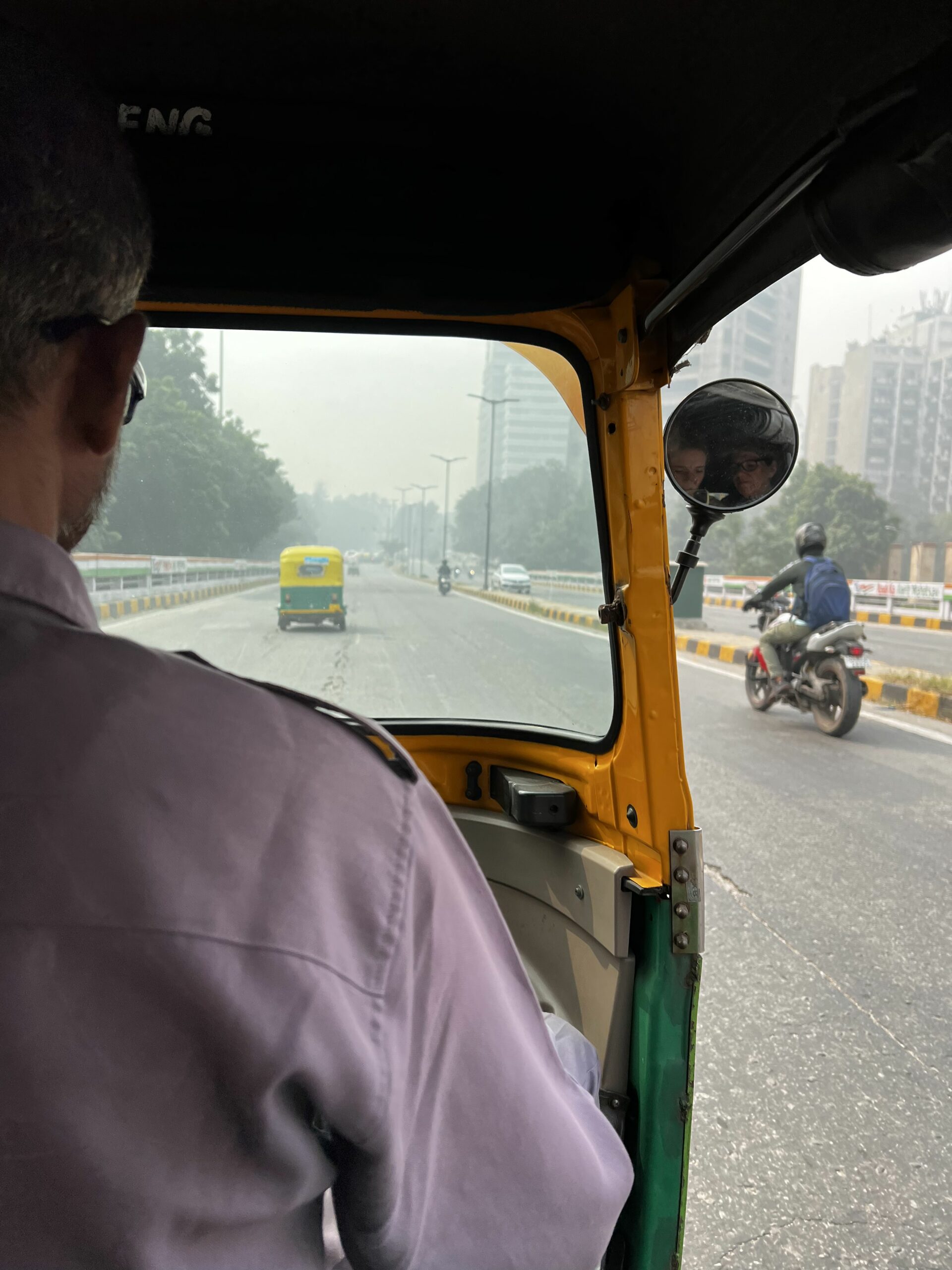
For city travel, I personally opt for autorickshaws most of the time, are they’re cheaper and more convenient than taxis. It’s a great way to travel around the city, and if you want to avoid the endless meter discussion or having to bargain, you can book a rickshaw through Ola or Uber, too, which is what I do most of the time. If you do want the get one off the street, just wave at an empty one or wait until they come to ask you.
The first two kilometres will cost $0.36 and after that, it will be $0.2 per kilometre. These are the current rates in Delhi as of October, 2023, which can be different in other cities and smaller towns.
What To Pack For India
Packing for a journey through India can be a perplexing task, given the country’s vast size and varying climates. Many travelers wonder about packing essentials and often face the challenge of fitting everything into one backpack. The key is to embrace the ‘less is more’ philosophy, as overpacking is a common pitfall. In this section, I’ll provide you with insights on what to pack to ensure you have precisely what you need – nothing more and nothing less.
Important things you should pack for India:
- World Adapter – European plugs work in India, but it still might be a good idea to take one along just to be sure.
- Raincoat – It rains a lot in India during the monsoon season, so a raincoat can be really helpful.
- Powerbank – There are often power cuts, and in some regions they can last for a long time.
- Warm jacket or sweater – When it’s winter in India, especially in the north of the country, it can get quite cold. Make sure to bring at least one warm clothing item with you for winters or visits to the mountains.
- Sturdy shoes – If you plan to go trekking, sturdy, outdoor shoes can be quite helpful.
For women, dressing appropriately is of utmost importance. Avoid donning short tops or shorts, as it’s advisable to opt for loose cotton pants that provide comfort without causing overheating during the country’s intense summer.
Pair them with a top that covers your shoulders and doesn’t reveal cleavage. In India, adopting a modest dress code helps ensure a level of discretion and minimize unwarranted attention.
Nightlife in India
The nightlife in India varies depending on your location. It’s vibrant in bustling urban centers, where you’d find locals frequently heading to bars and clubs on weekends. Large concerts and music gigs are quite common, too, especially in Delhi, Mumbai, Goa, Bangalore, and other big cities. In the more remote areas, these options may be scarce.
To immerse yourself in the Bollywood scene, look for events advertised as ‘Bollywood Nights’.
If you’re a woman planning a night out, it’s a good practice to have company, preferably with other women or men you know very well. This precaution ensures that you have a safe and enjoyable night out, with the added benefit of not having to wander alone after dark when it’s time to head home.
Currency | What Can I Use? How To Get & Best Rates
In India, the official currency is the Indian Rupee (INR). Travelers can acquire INR through ATMs, but it’s essential to check with the bank for any associated withdrawal fees. Cards such as Wise or Revolut are a great way to pay less fees when withdrawing money. Money exchange services are readily available throughout the country, too, including airports, banks, and independent exchange offices.
While airport exchanges are convenient, they often offer less favorable rates compared to other locations in the city. Travelers should be cautious of exchange scams and verify official rates when exchanging money.
India typically doesn’t accept USD or any currency other than INR for everyday transactions. Credit cards are becoming increasingly accepted, especially in urban areas, but cash remains the preferred method of payment in many places. Most locals pay through UPI or Google Pay, but you’re unlikely to be able to use these. Most ATMs in India allow withdrawals with foreign cards, although some banks may impose international transaction fees.
Food in India – How To Find Amazing Food
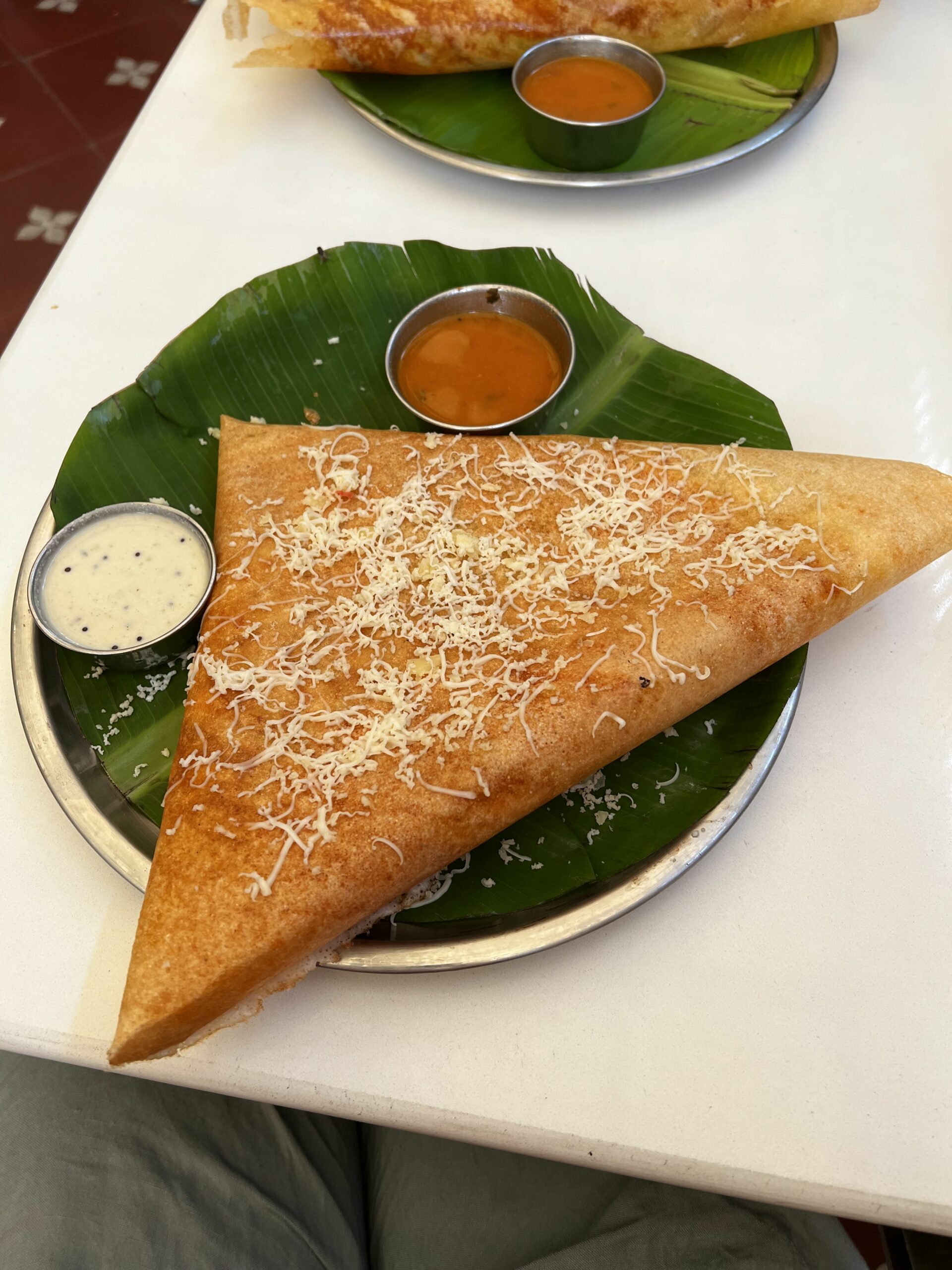
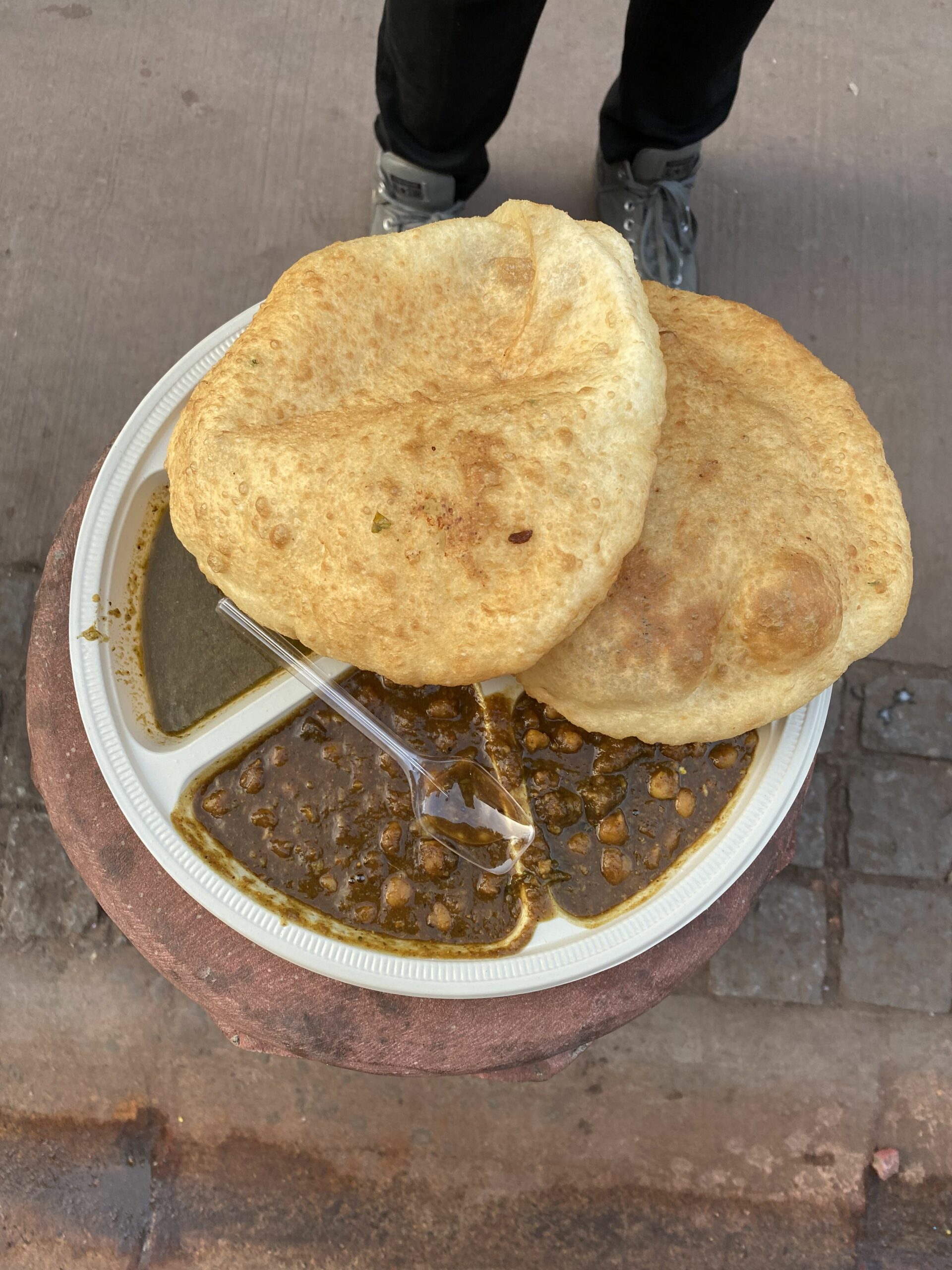
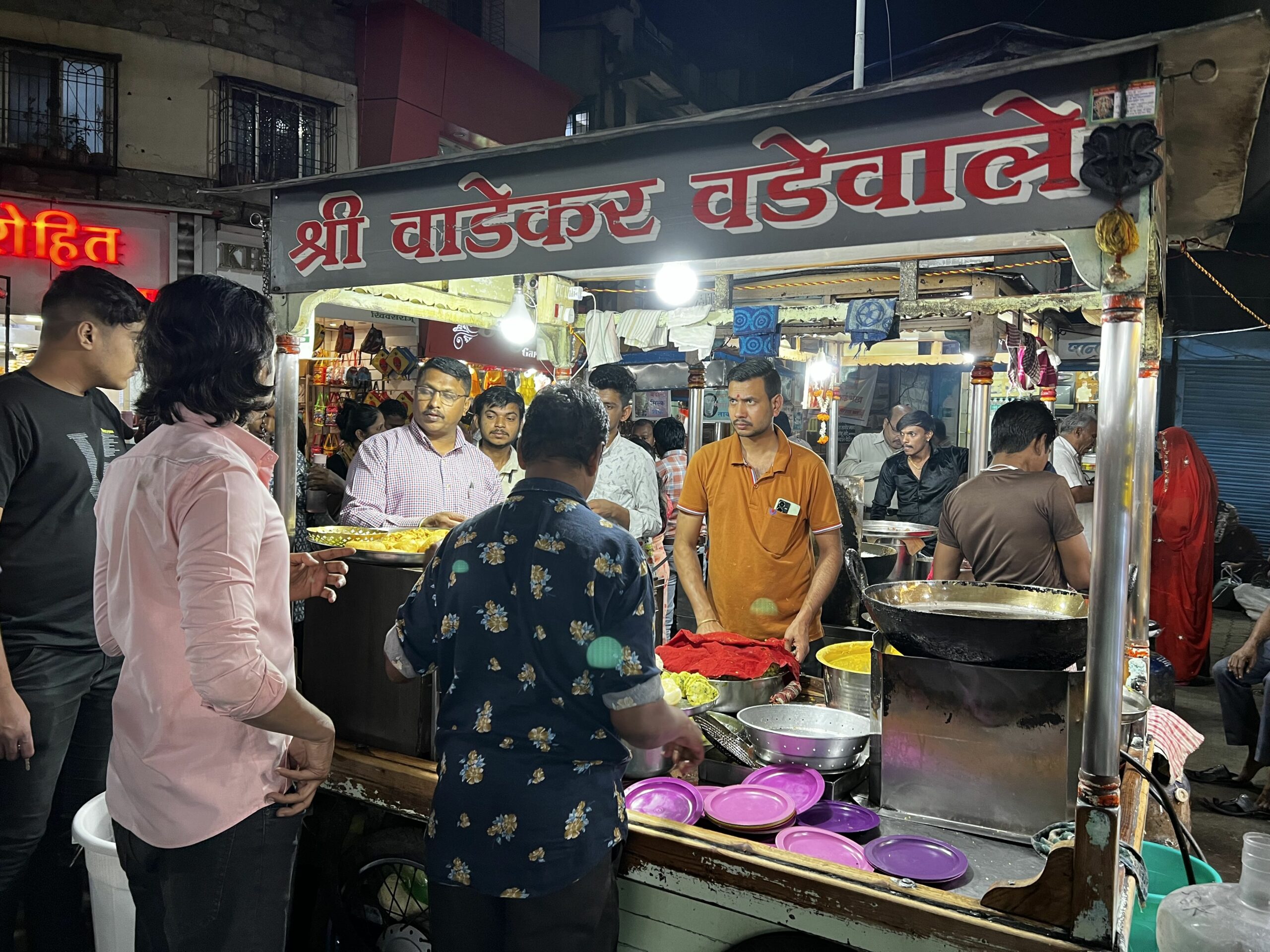
In India, the diversity of culinary traditions is as rich as its cultural tapestry, offering a wide array of food styles and flavors. Street food is an integral part of the Indian culinary scene, and apart from being incredibly delicious, it’s also surprisingly inexpensive. You can enjoy mouthwatering snacks like samosas, chaat, and pakoras for as little as 10-30 INR (approximately $0.15-0.40 USD) from street vendors. For mid-range restaurants, expect to pay around 200-800 INR (about $3-11 USD) per person per meal, where you can enjoy regional dishes like biryani, tandoori, or curry-based meals.
If we talk about common meals by locals, they usually involve rice or bread (roti) served with various curries and vegetables. Lentils (dal) are a staple, along with yogurt (curd), and pickles (achar) to add zing to the meal.
To spot a good restaurant, look for crowded places where locals dine. Make sure to keep an eye on how hygienic it is, though. If you see a restaurant that’s crowded and continuously- serviced, however, it usually means that the place is worth trying.
Street food in India is another great experience you can go for, though make sure that your palate allows it. From spicy chaats to succulent kebabs, you’d find plenty of options to satisfy your taste buds in most cities and towns you’d visit across the country.
Must-try dishes include:
- Indian thali
- Biryani
- Dosa
- The diverse selections of Indian bread like naan and paratha
For a unique culinary adventure, sample lesser-known gems such as vada pav in Mumbai, litti chokha in Bihar, chole bhature in Delhi, or rogan josh in Kashmir. These dishes offer a great experience of India’s culinary diversity that is worth trying and may not be as familiar to foreigners.
Most food places open around 8am and stay open up until 11pm. They are open throughout the day.
- Breakfast (8:00 AM – 11:00 AM) – We usually eat masala dosa, paratha, poha, or poori bhaji. Breakfast should cost you between Rs. 80 ($0.96) to Rs. 200 ($2.40)
- Lunch (1:00 PM to 2:00 PM) – We usually eat Indian thali, dal and roti, biryani, or curry dishes. Lunch should cost you between Rs. 100 ($1.20) to Rs. 250 ($3)
- Dinner (8:00 PM to 10:00 PM) – We usually eat butter chicken, khichdi, paneer or curry dishes. Dinner should cost you between Rs. 100 ($1.20) to Rs. 300 ($3.60)
Culture in India
Indian culture is incredibly diverse and rich, shaped by a tapestry of traditions, languages, and religions. Customs and etiquette can vary greatly from region to region. Indians are generally warm and hospitable, with a strong sense of family and community. Politeness is highly valued, and it’s customary to greet each other with folded hands and a slight bow, saying “Namaste”.
It’s considered rude to disrespect religious symbols, display public affection, or wear revealing clothing in more conservative areas. On the other hand, accepting food or gifts with your right hand, shaking with your right hand, removing your shoes when entering homes or temples, and showing respect for elders are all seen as friendly gestures.
On the religious disrespect thing, it’s actually rude to put your feet on the weights in the gym as you’re disrespecting the god of strength – Hanuman.
Before visiting India, it’s essential to familiarize yourself with the local customs and traditions, as apart from keeping things respectful, it will also make your experience more enjoyable and authentic.
Common Scams To Look Out For & Avoid
When you first come to India, you’ll be surprised at the sheer number of scams floating around. It’s good to know what they are so it’s easier to avoid and not fall victim. Some of the scams are super advanced, and you wouldn’t notice when you got scammed until you’re far into it, or maybe even afterward.
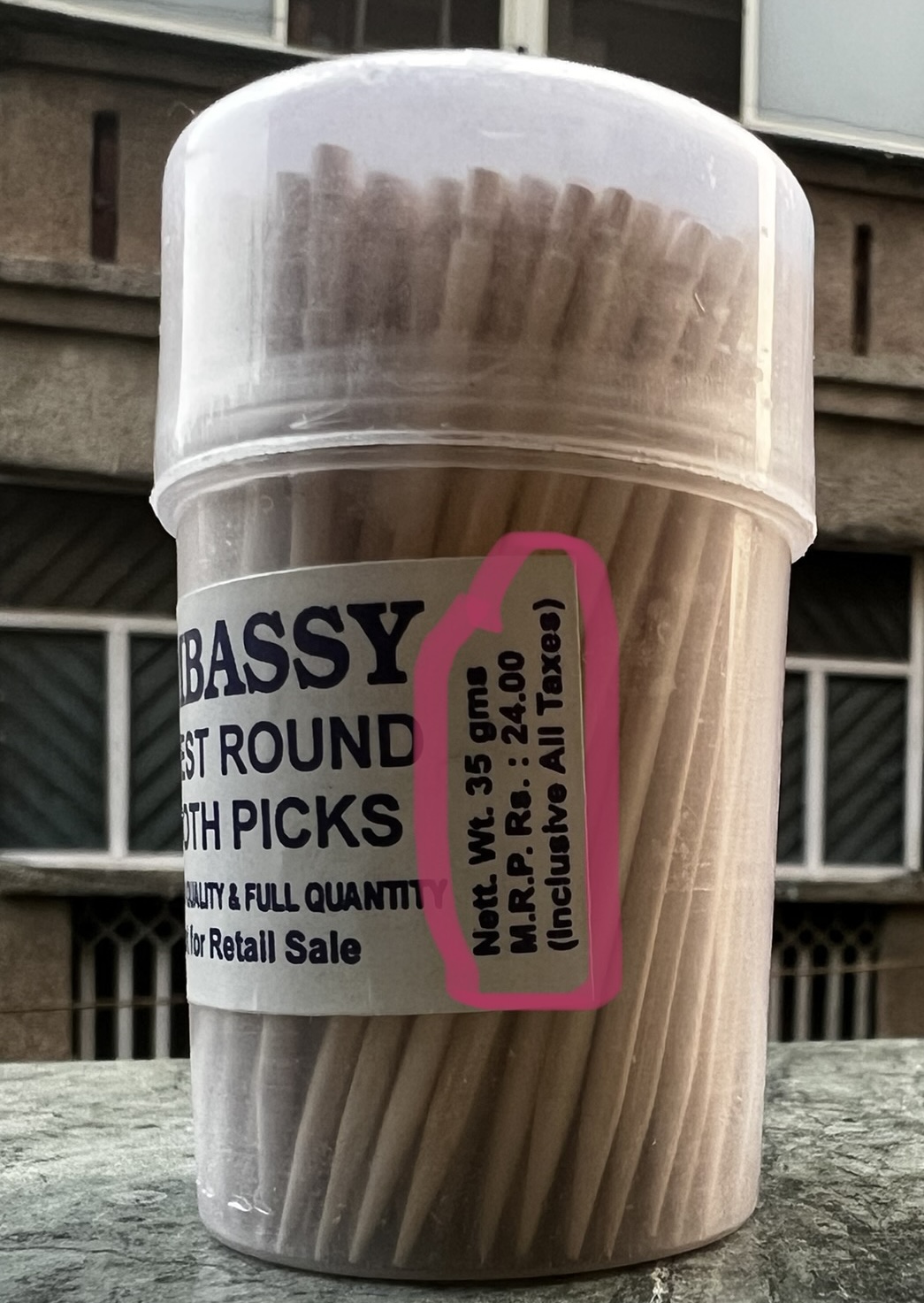
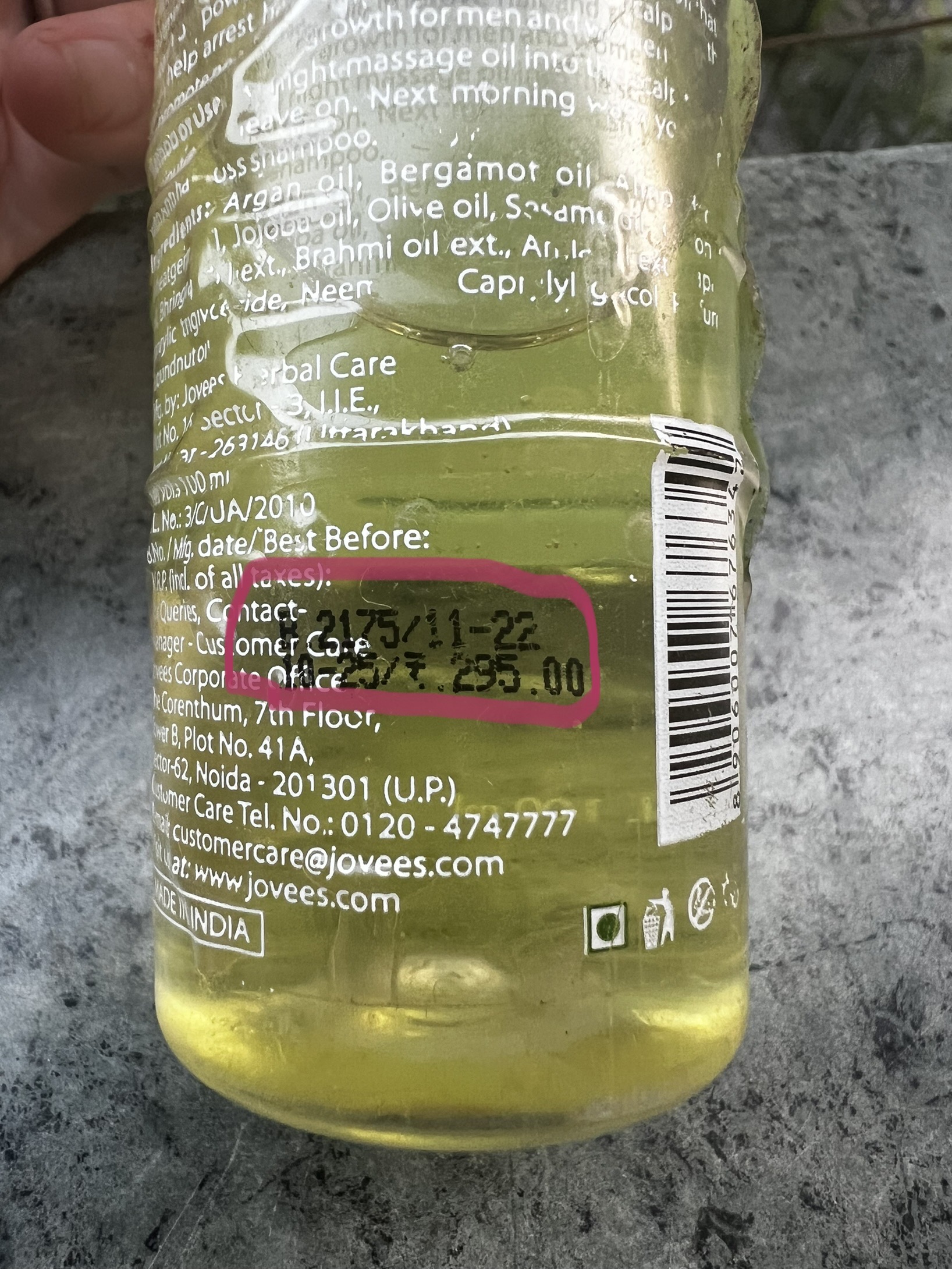
Overcharging in Shops
Some shopkeepers may overcharge tourists, especially in the tourist-heavy areas. To avoid this, you can look at the product packaging and check the listed price – or MRP. It’s the Maximum Retail Price which is what you are required to pay.
Fake Tickets & Guides
Be wary of individuals offering fake tickets or acting as unlicensed tour guides. They act very kind at first, making it seem that they just want to help you as a guest – and that might be true in many cases, too. They’ll gain your trust by being nice, and before you know it, they get a rickshaw to drop you at some very sketchy tourist office and pressure you to book a tour for a very high price.
To avoid this, only book tours and buy tickets from reputable sources, and don’t trust any random ‘kind’ person offering help on the street. It’s always good to follow your intuition.
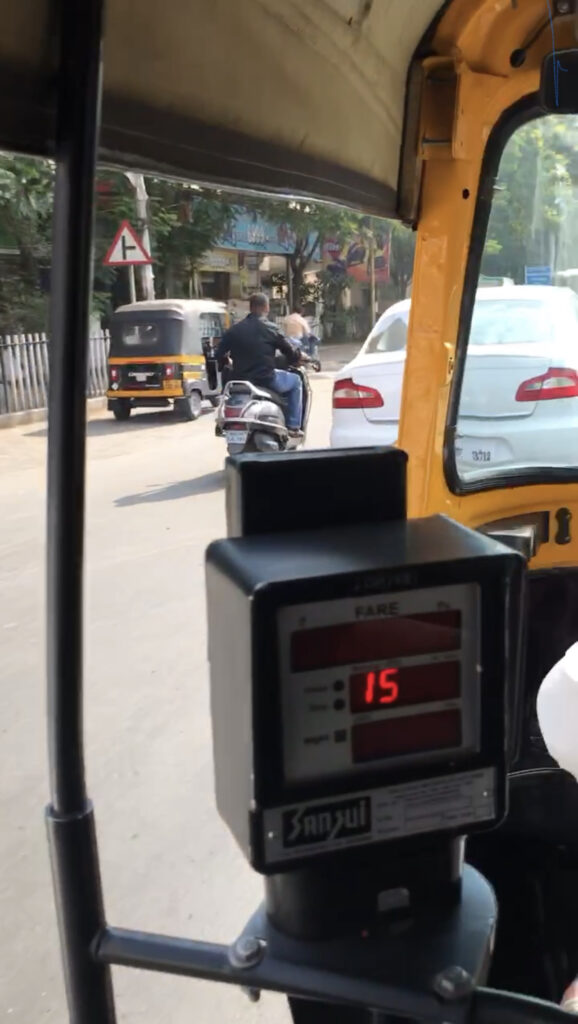
Taxi & Rickshaw Overcharging
Taxi and rickshaw drivers may overcharge if the fare is not metered. Insist on using the meter or agree on the fare before starting the journey.
Fake Police Officers
Scammers posing as police officers may ask for bribes or claim to fine you for alleged violations. Always ask for identification and verify with local authorities if you’re suspicious.
Porters Scam
Porters may offer assistance, making it seem like it’s out of goodwill. Putting your bag in the car, opening the door for you, and when you are about to head off, they ask you for a big tip. To avoid this, when they come to you to help, just say a strict no, and don’t give your trolley to anyone you don’t know or trust beforehand.
Blessings Scams
Beware of people offering blessings or tying a sacred thread on your wrist, as they may later demand money for the service.
Health | What Vaccines Do I Need?
Disclaimer: Please check the up-to-date medical advice before traveling to this country, we are not medical professionals.
Vaccines needed for India
- Routine Vaccines – Ensure you are up-to-date on routine vaccines like measles, mumps, rubella, diphtheria, tetanus, pertussis, and polio.
- Hepatitis A – This vaccine is recommended for all travelers to India. It helps protect against hepatitis A – a viral infection that can be contracted through contaminated food or water.
- Typhoid – The typhoid vaccine is highly advised for travelers, as typhoid fever is still a major risk in India, especially in areas with poor sanitation and limited access to clean water.
- Hepatitis B – It’s recommended if you might have sexual contact with a new partner, get a tattoo or piercing, or have any medical procedures.
- Rabies – If you plan on spending a lot of time outdoors, where you might come into contact with stray or wild animals, consider getting the rabies vaccine.
- Japanese Encephalitis -This vaccine is recommended for travelers that plan to spend an extended period in rural areas, especially during the monsoon season when mosquito-borne diseases are more prevalent.
If you’re travelling from a country where Yellow Fever is present, such as Africa, you need to have a vaccine against the disease and a certificate for proof.
Are Malaria Tablets Necessary In India?
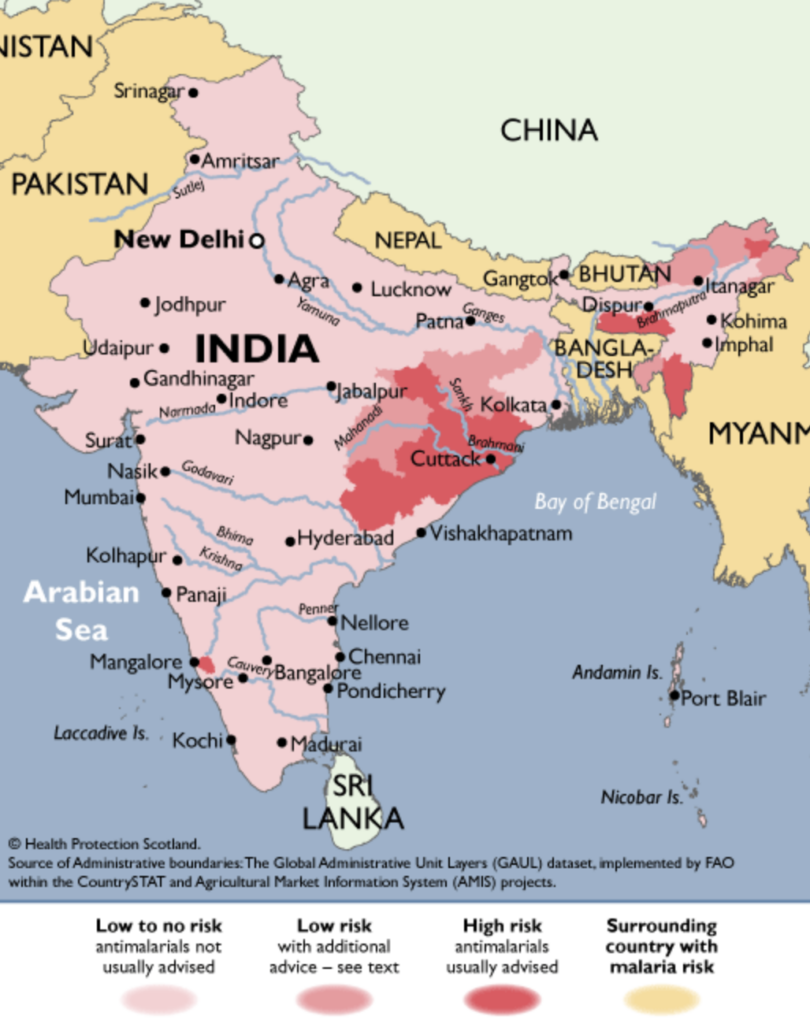
This totally depends on your travel plans, although most places where travellers go don’t have a high risk for Malaria, if you go to more rural areas, especially in the northeastern side of the country, it is recommended to take malaria tablets. You can see the high-risk areas for this disease on the map above.
How Safe is The Water in India?
Tap water is not drinkable, and you should be cautious when drinking water from places where you’re not sure if it came from the tap. Most places have water filters for this reason, which is perfectly safe to drink. Try to avoid ice cubes, as you’re never sure if they were made with tap or filtered water.
Are there still COVID rules applicable?
No, all rules regarding COVID have been lifted and no longer apply.
Safety | Is India Safe?
India is generally safe for tourists, however, precautions should be taken. Petty crime and scams do occur, and as a woman, you have to be extra cautious especially if walking alone and at night. Staring is very common and we’ve personally had men follow us, or act incredibly creepily. Be careful.
Crime in India
Crime in India covers a wide spectrum of offenses, but petty crimes like theft and scams are the most commonly reported cases. The National Crime Records Bureau (NCRB) of India records data on various crimes, and according to their most recent statistics, theft is the most prevalent crime, with over 1.10 million cases reported in 2019. While these figures might seem high, it’s essential to note that the vast majority of tourists do not encounter serious safety issues. Violent crimes against tourists are relatively rare, and with basic precautions such as safeguarding belongings and avoiding isolated areas at night, visitors can enjoy a safe and enjoyable trip to India.
Safety for Women in India
As a female in India, it’s very important to take extra precautions. Safety for women in India, is sadly, not the best, but things are gradually improving for the better. When traveling here, it’s important to dress appropriately and modestly. When someone asks for a photo, say no, and don’t be too kind, just stand your ground and show them that they can’t f*ck with you.
Harry here (not Jytte who wrote this). One thing I want to add – a lot of men were incredibly creepy with my gf and I had to be on guard all the time. It got to the point where she would not come out after dark. We had 2 guys try to follow us home. One man explicitly asked if she was my girlfriend then waited outside the shop, tried to act friendly and when ignored, followed us down the street shouting until we dipped into a shop to lose him.
One man at the railway station came directly up to me while I was sitting with my girlfriend, did not look at me or say hello, and directly stared at her, rubbing his face and lips, until I asked him “what the f*ck do you think you’re doing” then he finally sputters out the words “l, l, l, liiippss”. We got our bags and left immediately.
Another situation where a man walked past, looked her entire body up and down as he passed by, and kept staring behind his shoulder until I shouted “have some f*cking manners you don’t stare like that”.
She was dressed in modest baggy clothing for the duration of our stay.
These are three situations out of many and I dread to think what might happen if a pretty woman is alone in India at night. Be very careful, rapes are high in India and there are big problems with how *some* men treat women.
This is not just our reports either, check forums and you will see many women reporting these things. Please be careful, there was a rape reported in India every 16 minutes in 2019.
Road Safety in India
Road safety in India is a concern, with the country experiencing a high number of road accidents each year. According to data from the Ministry of Road Transport and Highways, India saw over 150,000 fatalities in road accidents in 2019, making it one of the countries with the highest road accident rates globally.
I personally experienced that bus drivers drive for a straight 20+ hours without breaks, or even drink and drive. If you want to be extra careful, you might avoid taking a bus for certain journeys and opt for a train instead. The chances that you will be involved in an accident are definitely higher than most countries, though I’ve never personally experienced a serious accident in India.
It’s important to have a good travel insurance, and I strongly advise against riding motorcycles without proper licensing, as it’s illegal and risky. Adhering to road safety rules, wearing helmets, and – personally – believing that nothing will happen to you can minimize the risks. According to many of the locals, don’t think about it and let it go.
Areas Advisable Not To Travel
Please check the advisories from your local government, as there are certain areas most governments advise not to travel to. If you do travel to these areas, your embassy will not take responsibility if something happens to you. I have personally visited Kashmir despite my government’s strong advisory against it, and while I didn’t face any safety or other issues, it’s important to keep your local government’s advice in mind before making a decision to head to areas like these.
Precautions You Should Take:
- Travel Insurance: Purchase comprehensive travel insurance that covers medical emergencies, trip cancellations, and lost belongings.
- Food Safety: Consume cooked and hot food, avoid street vendors in areas with questionable hygiene, and peel fruits before eating them.
- Safety in Crowded Areas: Be cautious of pickpocketing in crowded places and use anti-theft bags or pouches to safeguard your belongings.
- Modest Clothing: Dress modestly, especially in religious and conservative areas, to respect local customs.
- Street Animals: Be cautious around street animals, as some may carry diseases or behave unpredictably.
- Avoid Public Display of Affection: Public displays of affection are not common in India and may be considered inappropriate in some places.
- Emergency Contacts: Keep a list of emergency contacts at all times – preferably offline – including local authorities, your embassy, and your travel insurance provider.
- Stay Hydrated: Drink bottled water or filtered water to avoid waterborne diseases.
Travel Insurance For Digital Nomads in India
Securing a comprehensive travel insurance plan is a critical step when visiting India. The country’s medical costs can be surprisingly high, and private care in the event of an accident or illness can lead to substantial expenses. Numerous backpackers have found themselves in unfortunate situations without insurance, facing exorbitant medical bills that could easily reach tens of thousands of dollars. With travel insurance, you can safeguard your finances and ensure access to quality medical care in case something goes wrong, providing peace of mind during your journey.
Safety Wing Nomad Insurance is a great travel insurance provider that offers great coverage for travelers and nomads in India.
Language & Useful Phrases in India
English is widely spoken and understood in India, especially in urban and tourist areas. In major cities like Delhi, Mumbai, Bangalore, and Chennai, along with popular tourist destinations, you’d find many people that can easily communicate in English. This is particularly true for hotels, restaurants, and businesses that cater to tourists.
In the less urbanized, remote areas, you may encounter fewer English speakers but can still manage basic communication, especially with younger generations, as English is one of the two official languages of India.
While English is prevalent, it can be a rewarding experience to learn some basic Hindi/local phrases, as it showcases your respect for the local culture and can facilitate interactions with natives you’d encounter in your travels. Hindi is the most widely-spoken language in India, so picking up some common phrases can be beneficial. It’s a relatively approachable language for beginners, and many resources are available for learning it, including language schools, online courses, and language apps like Duolingo.
Some Useful Phrases:
- Haanji – Respectful way of saying Yes
- Nahi – No
- Kitna? – How much?
- Kya haal hai? – How are you?
- Kya aap cards lete hain? – Do you accept card?
- Bahut accha hai – It’s very good
- Aapka naam kya hai – What’s your name?
- Dhanyavaad – Thank you
- Mujhe nahi chahiye – I don’t want it
- Chalo – Let’s go
- Theek hai – Okay
- Kya aap angrezee bolate hain? – Do you speak English?
- Mujhe samajh nahi aya – I didn’t get what you said
- Bathroom kahan hai? – Where is the restroom?
- Ye bahut mehenga hai – It’s too expensive
- Alvida – Goodbye
- Kripya – Please
- Metro station kidhar hai? – Where is the metro station?
- Kya aap meri madad kar sakte ho? – Can you help me?
- Mujhe kam mirch chahiye – I don’t eat spicy food
Things I Wish I Knew Before Going
All I can say is that I wish I knew how kind the people are, how they want to involve you in their local ways of life, and how proud they are of the place they come from. When you mention going to India, you often hear horror stories with loads of questions about exactly why you think that is a good idea. Let me assure you that there’s nothing to worry about. Follow your heart and just go for it. You’ll fall in love with this incredible nation and the friendliness of the people you meet here. If I had known all of this before I came, I wouldn’t have been so worried about visiting this country. And I have come across that feat taking this step because of the same apprehensions and fears. I just want to say that it’s really not as bad as most people make it seem. Come and see for yourself!
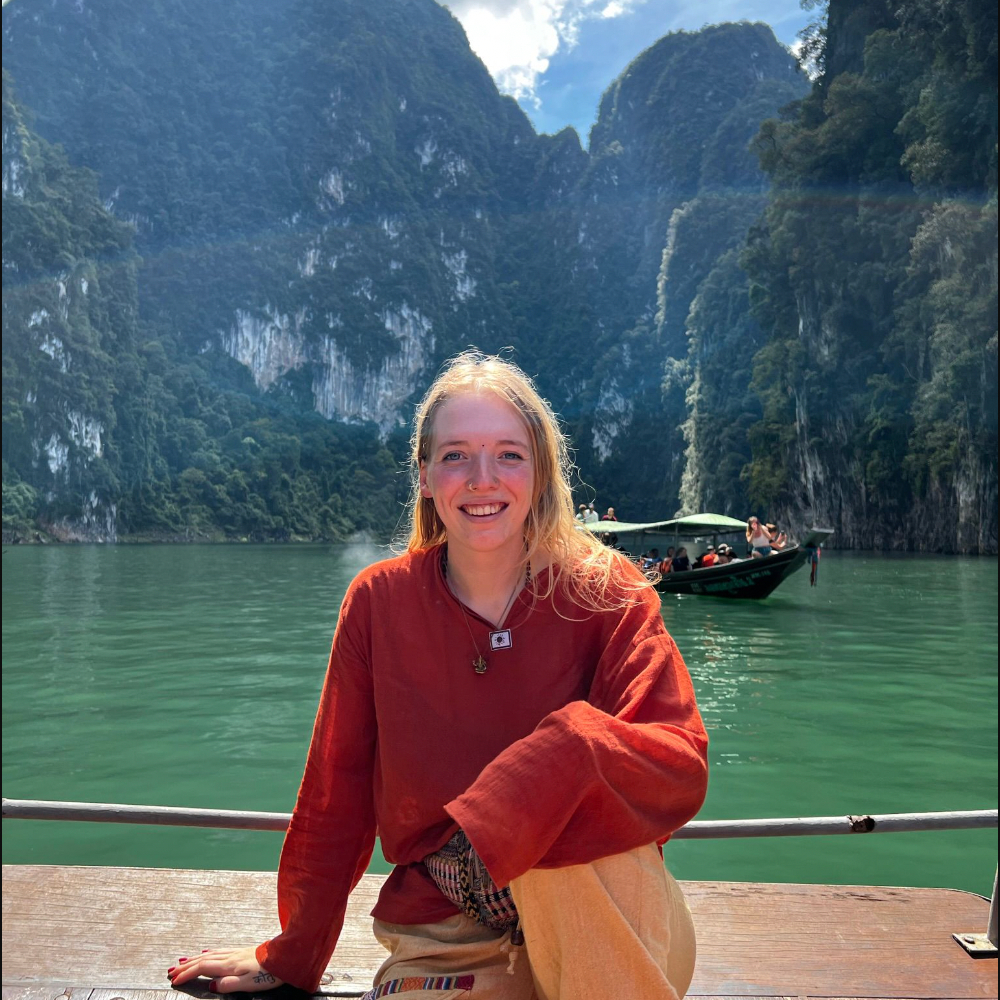
Jytte is a 22-year-old female adventurer from The Netherlands. She loves to fully immerse herself in the local ways of living, going ‘off the beaten path’ to truly experience the countries she visits and their unique way of life. Her wanderlust has taken her to Asia, with a particular focus on India. Here you’ll find her writing about all things India and Asia with a focus on digital nomadding there.
